NORTH SEYMOUR ISLAND
After spending the night traveling back to the north side of Santa Cruz, we came to the impressive North Seymour Island, home to thousands of birds and the Magnificent and Great Frigate birds were in full mating form.
This display flying ability is again quite amazing … to maintain complete control with a giant sac in the middle of the body changing the aerodynamics.
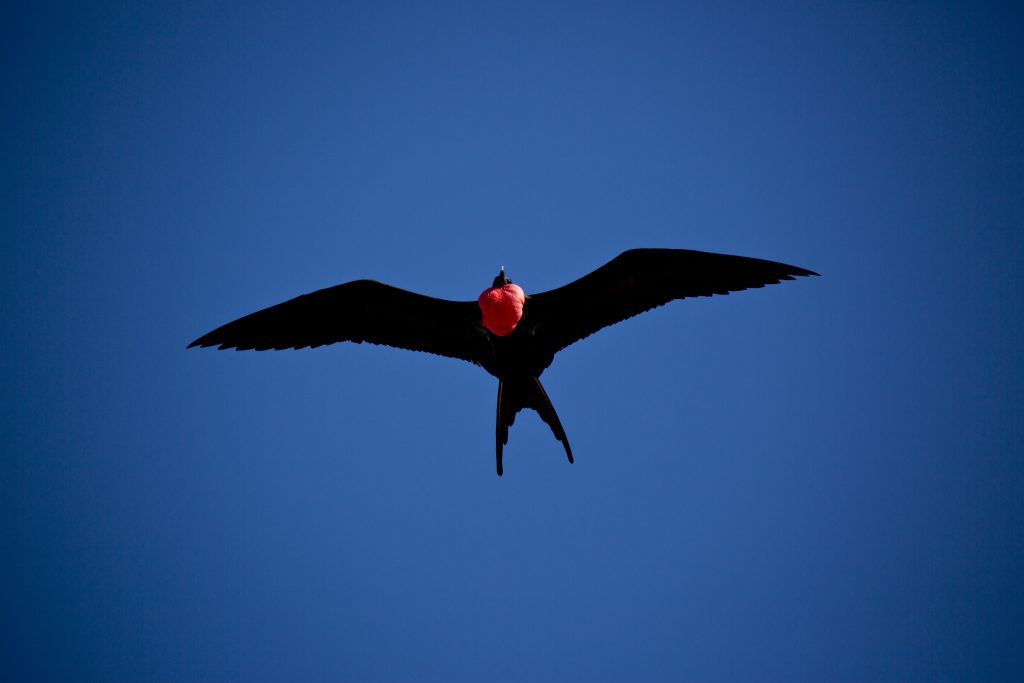
Off to build the nest, such that it is for frigate birds.
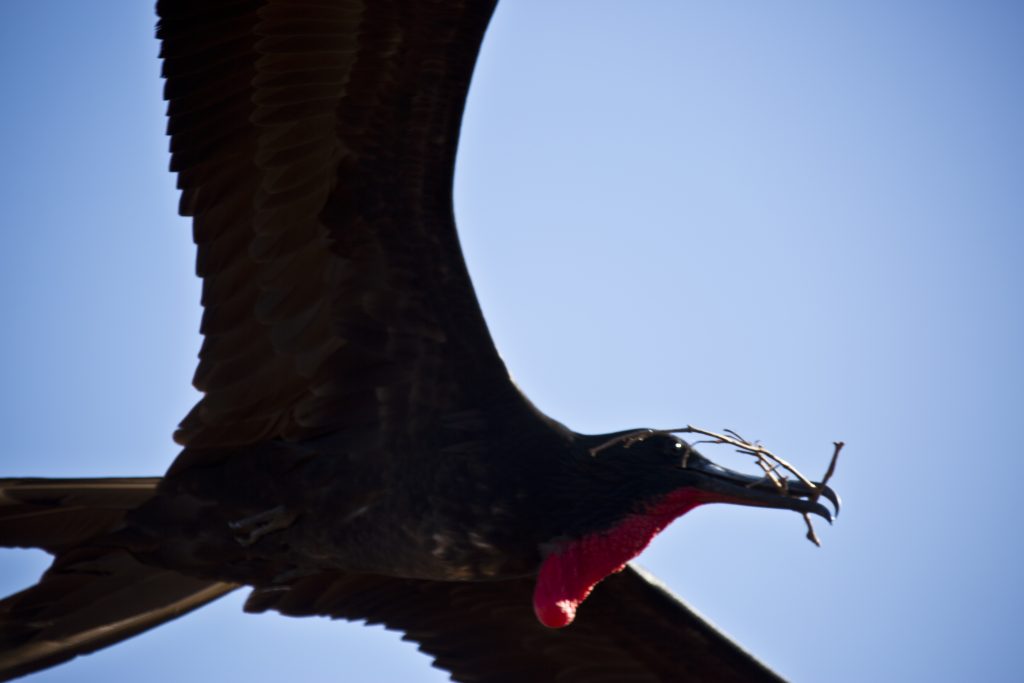
There was some serious courtship and displays of aggression going on. To give a little perspective on relative size, a full sized adult is about a meter long, with a wingspan of 2-2.3 m (6.5 – 7.5 ft).
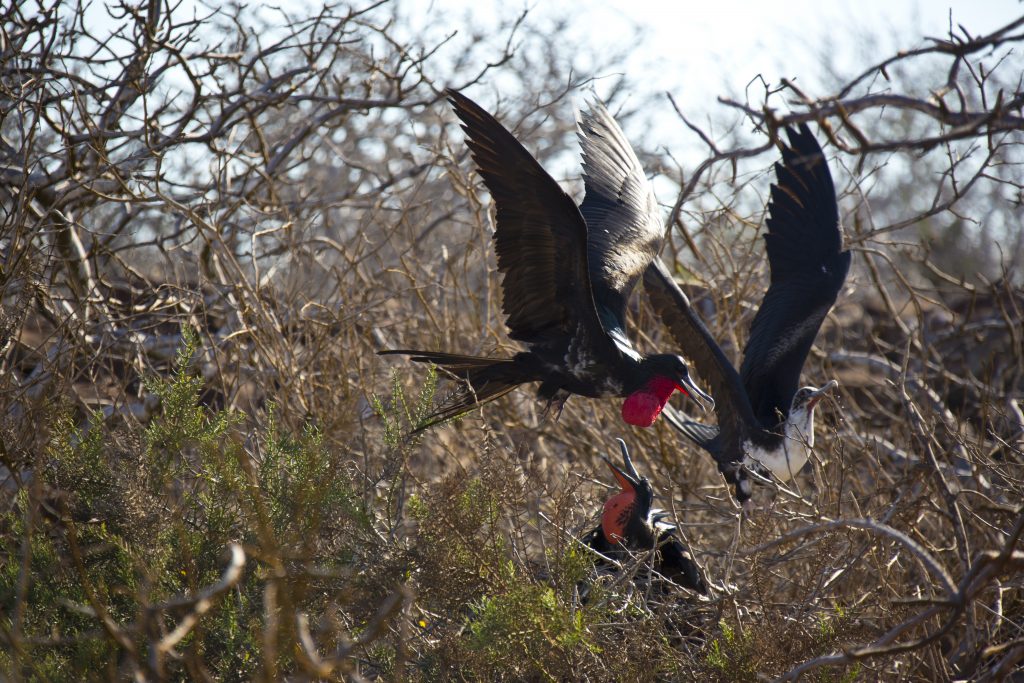
I’m impressed, but the female seems more interested in cleaning herself … perhaps she just has a headache.
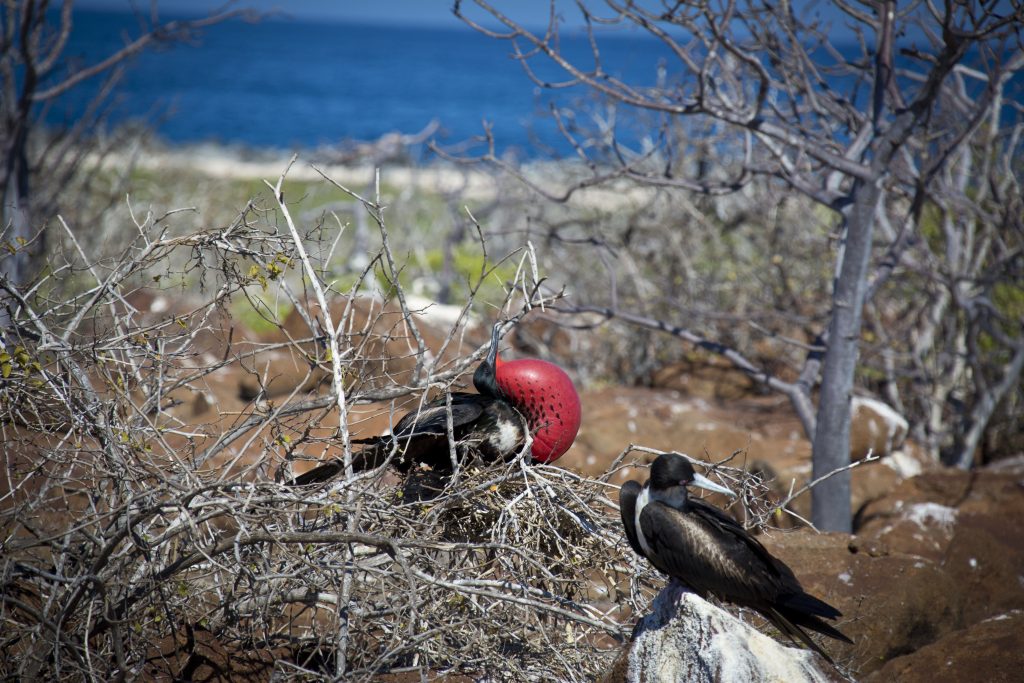
Our friends the land iguanas were quite yellow on this island.
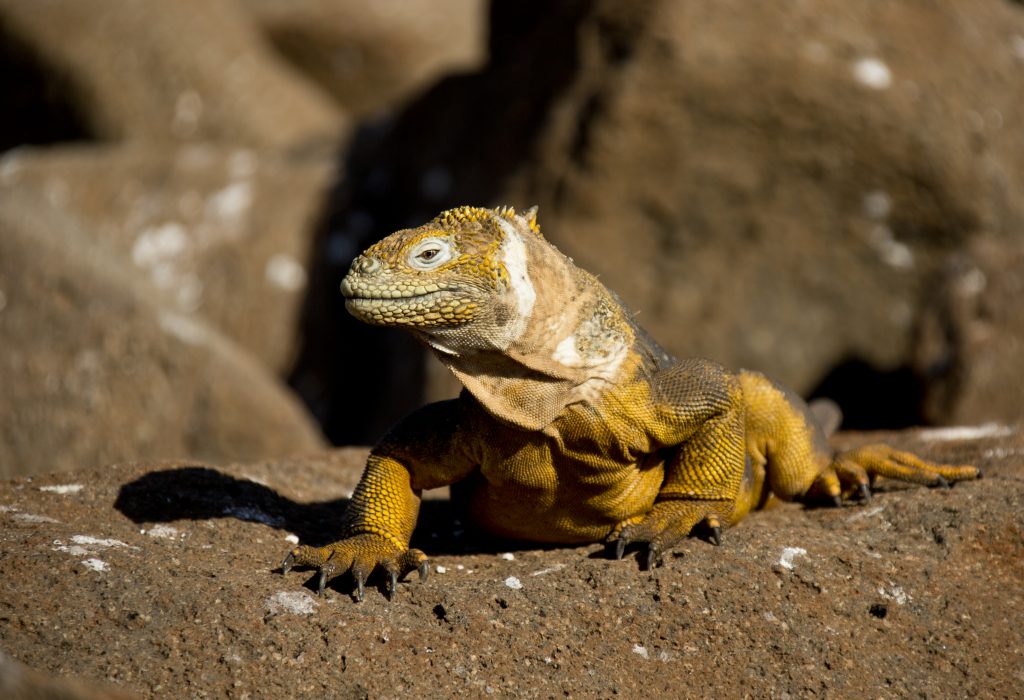
A swallow tailed gull, also endemic to the Galapagos. It’s nocturnal, so he is up late.
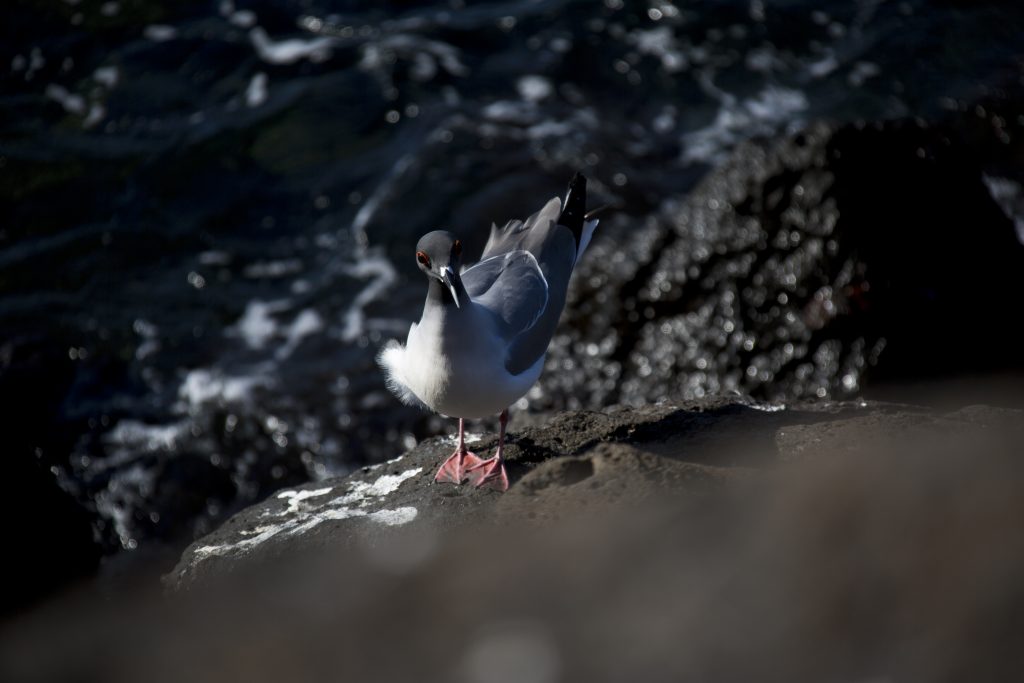
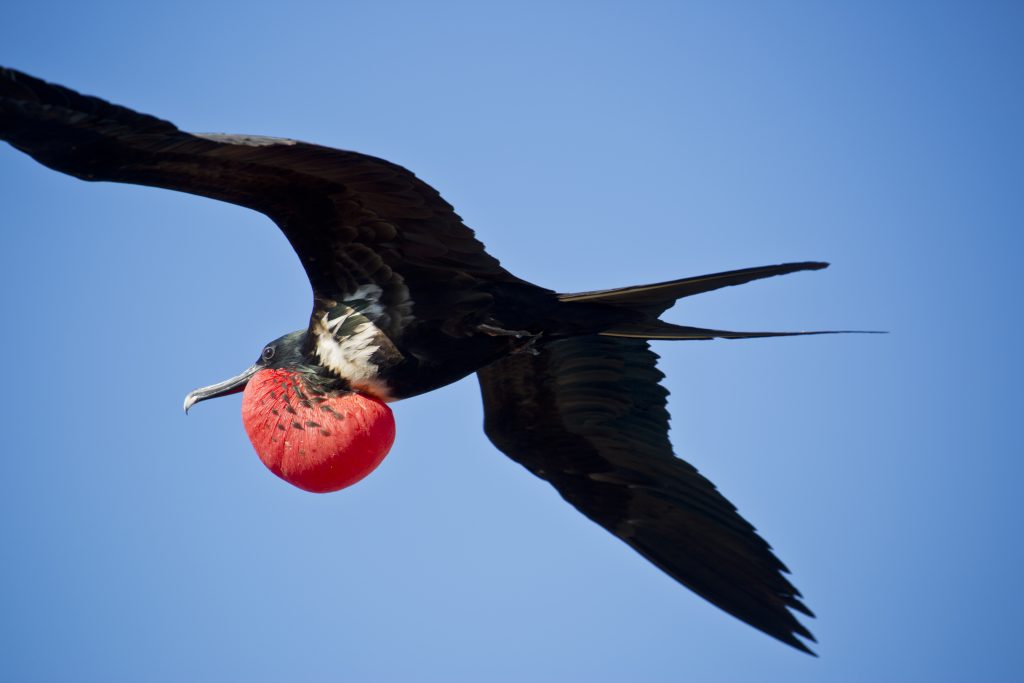
A blue-footed booby with her eggs
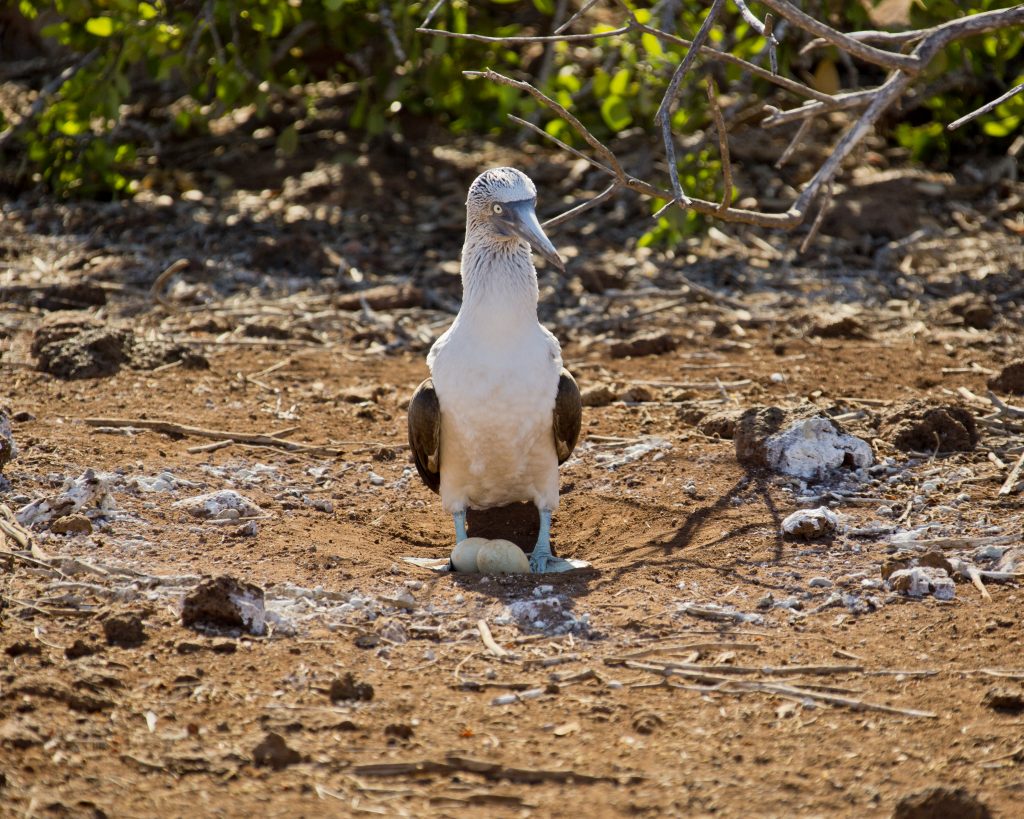
They slightly dirty the eggs to help hide them from predators.

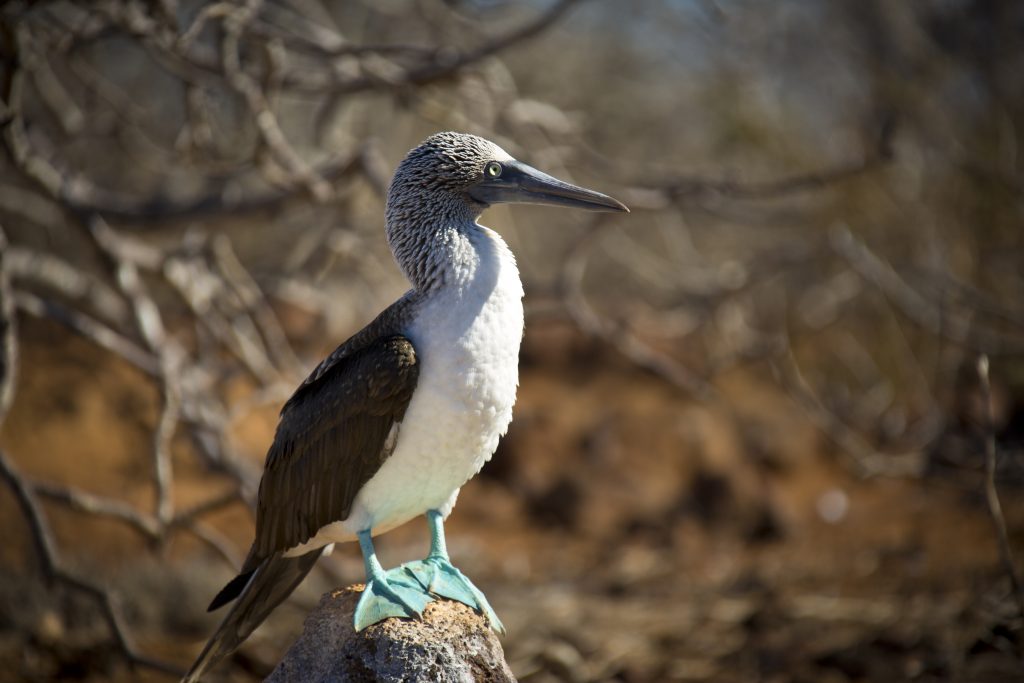
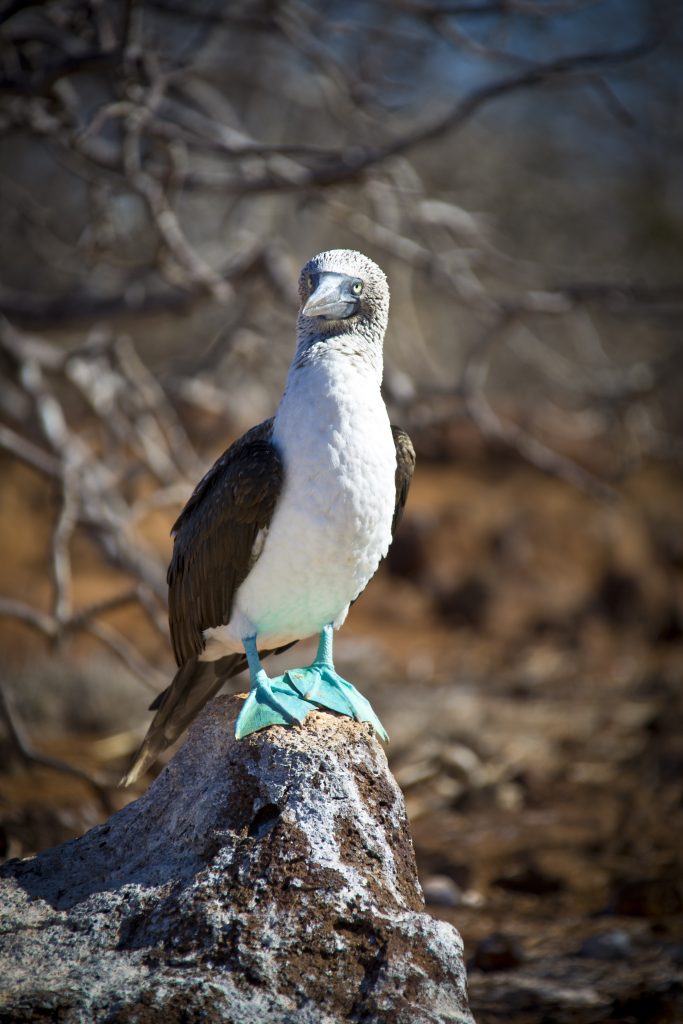
A juvenile frigatebird.
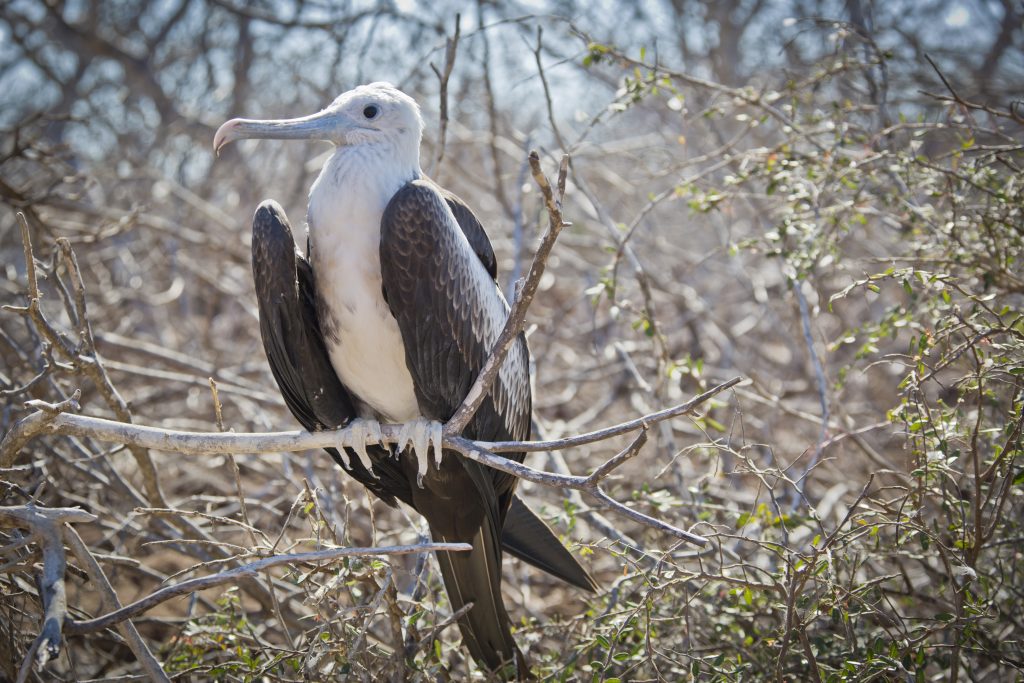
The famous Booby Dance.

Get up for it!
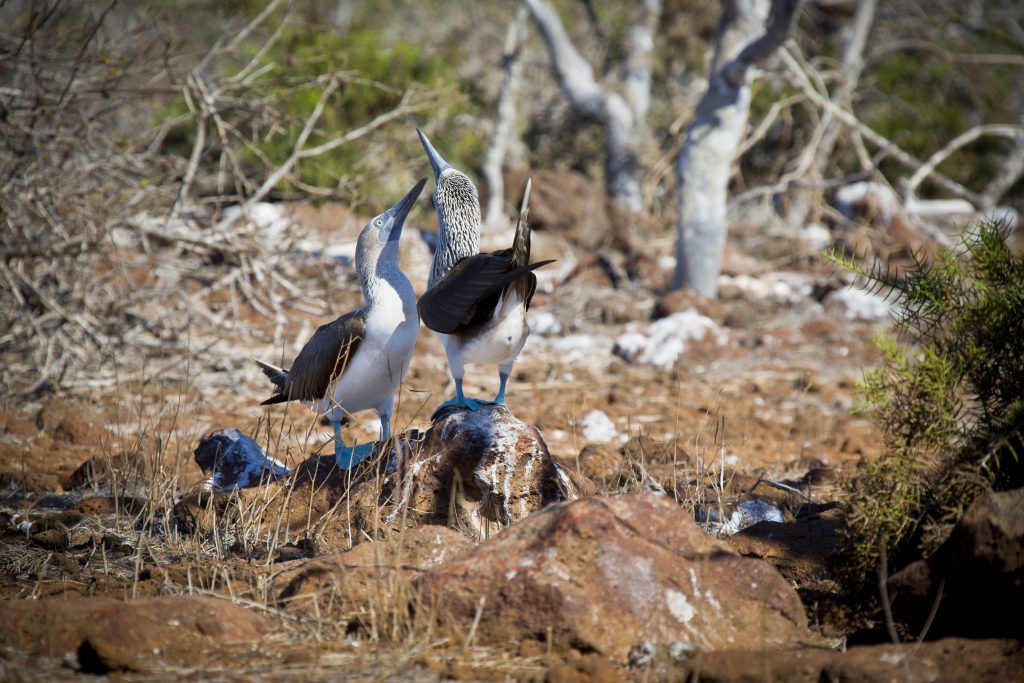
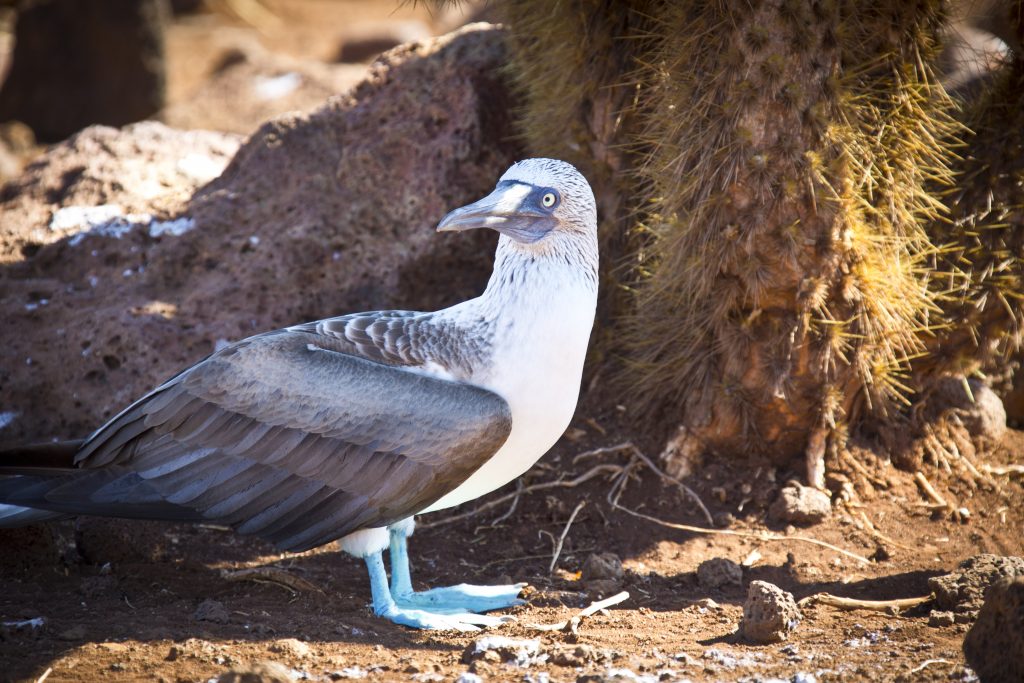
Yeah, I’m all puffed up.
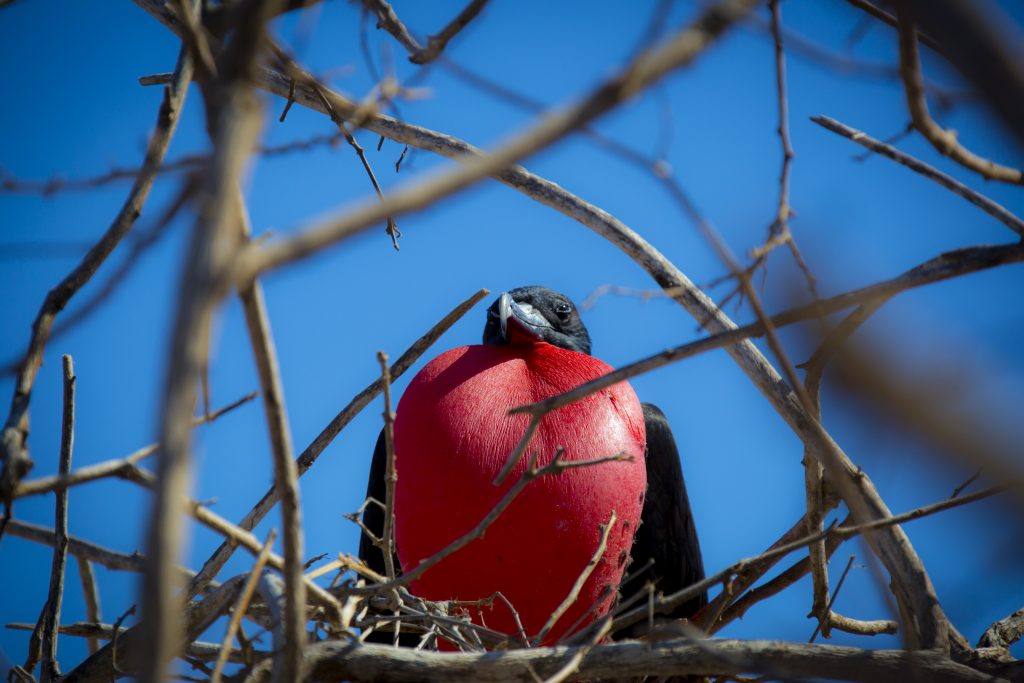
The Booby nest consists of defecating in a circle and digging a shallow hallow.
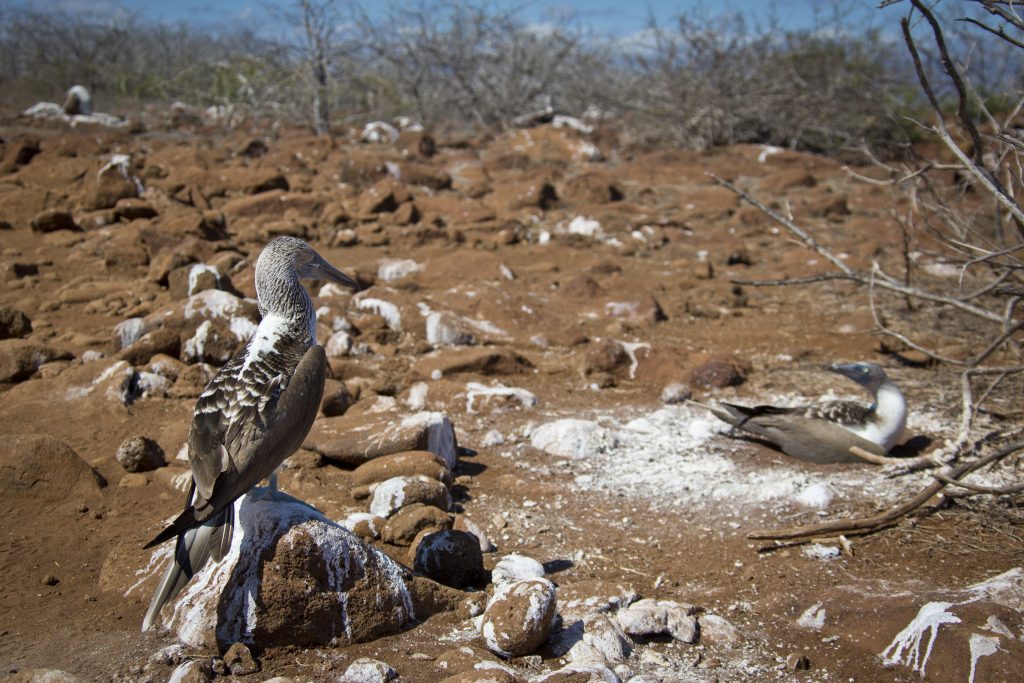
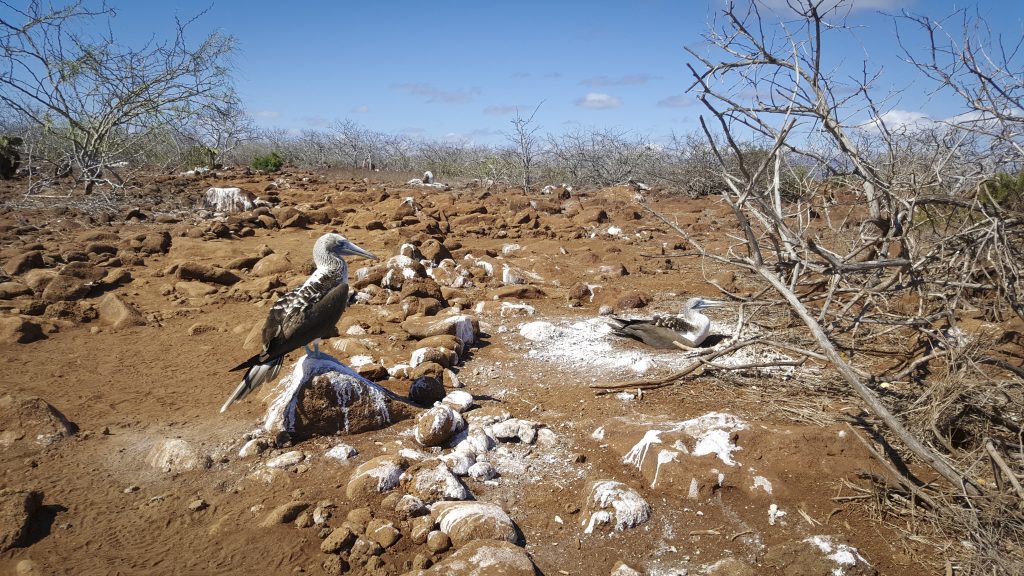

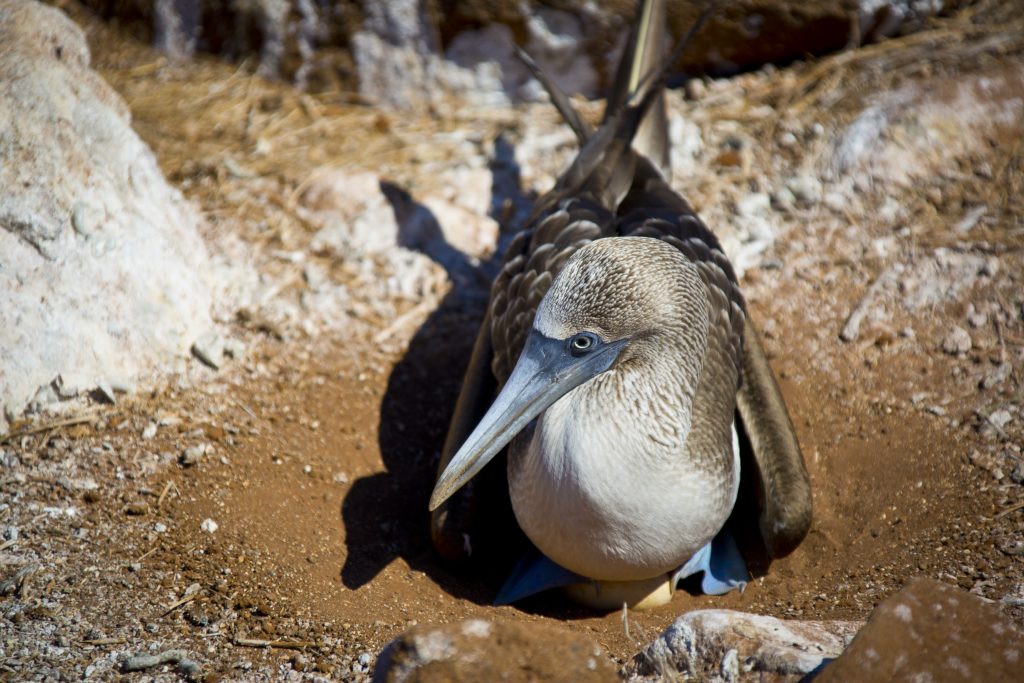
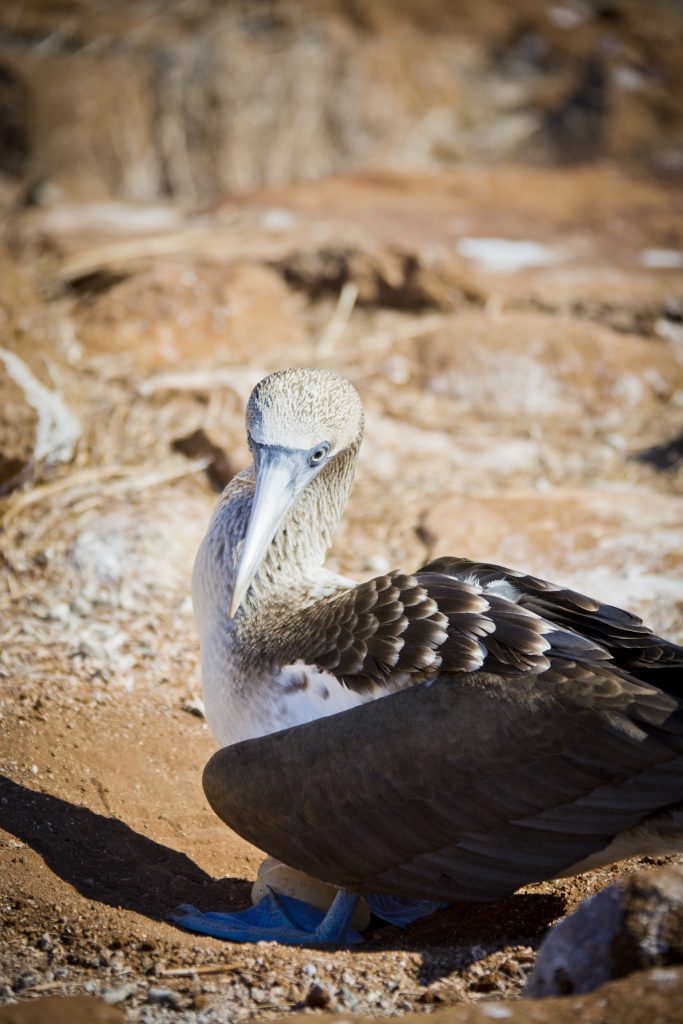

I can’t tell, this guy seems either really tired or completely dejected. He’s a Great frigatebird, but perhaps even the green iridescence wasn’t enough. 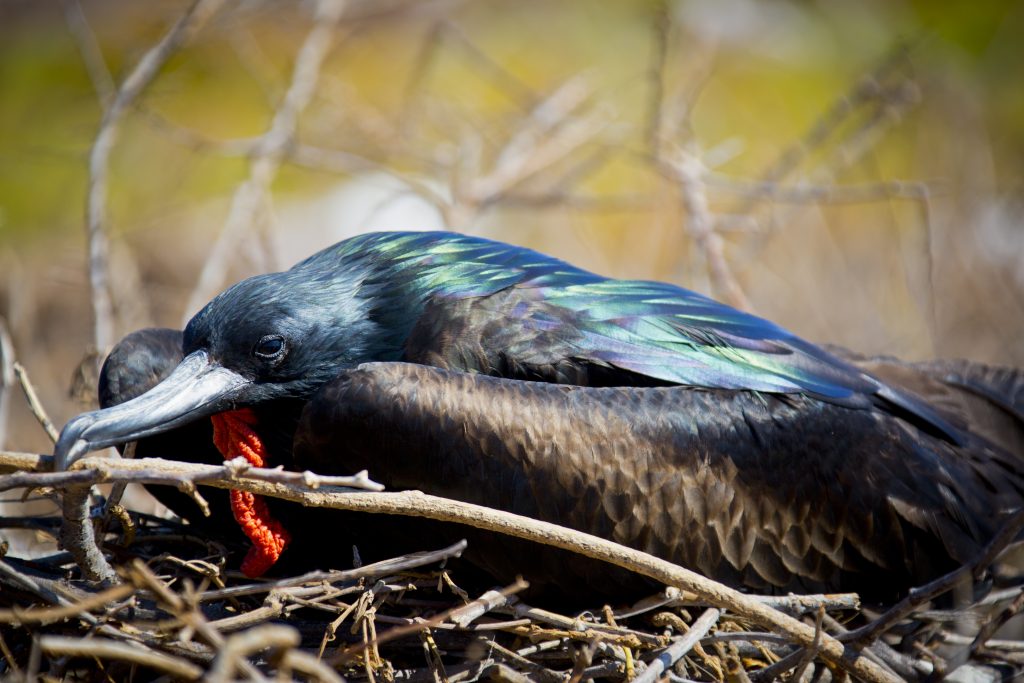
A female magnificent frigatebird.
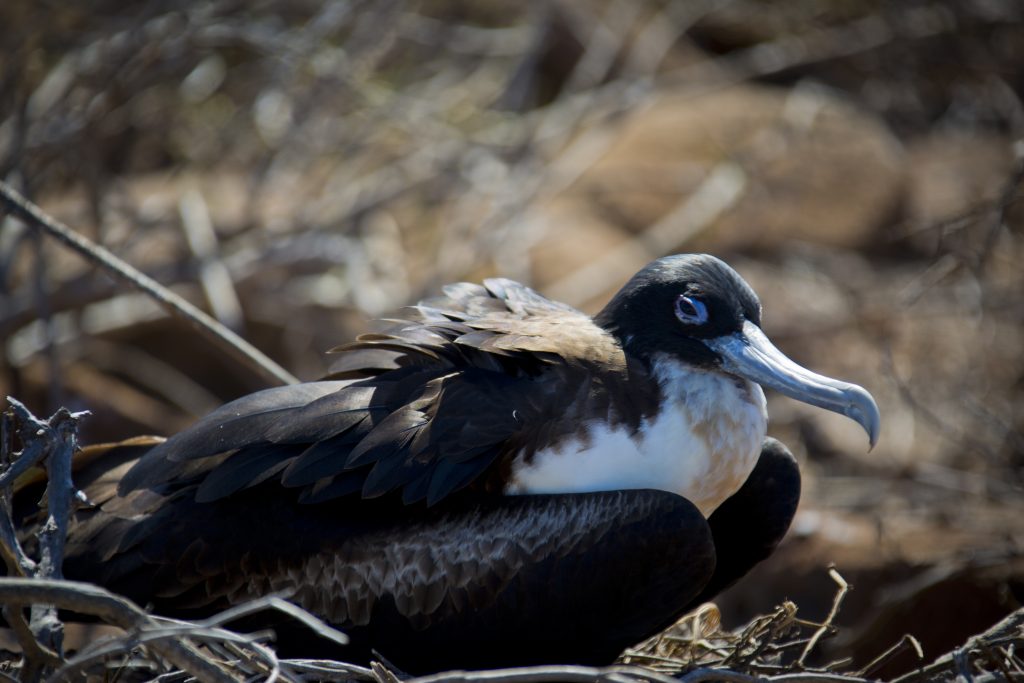
Our little group with Billy on the left.
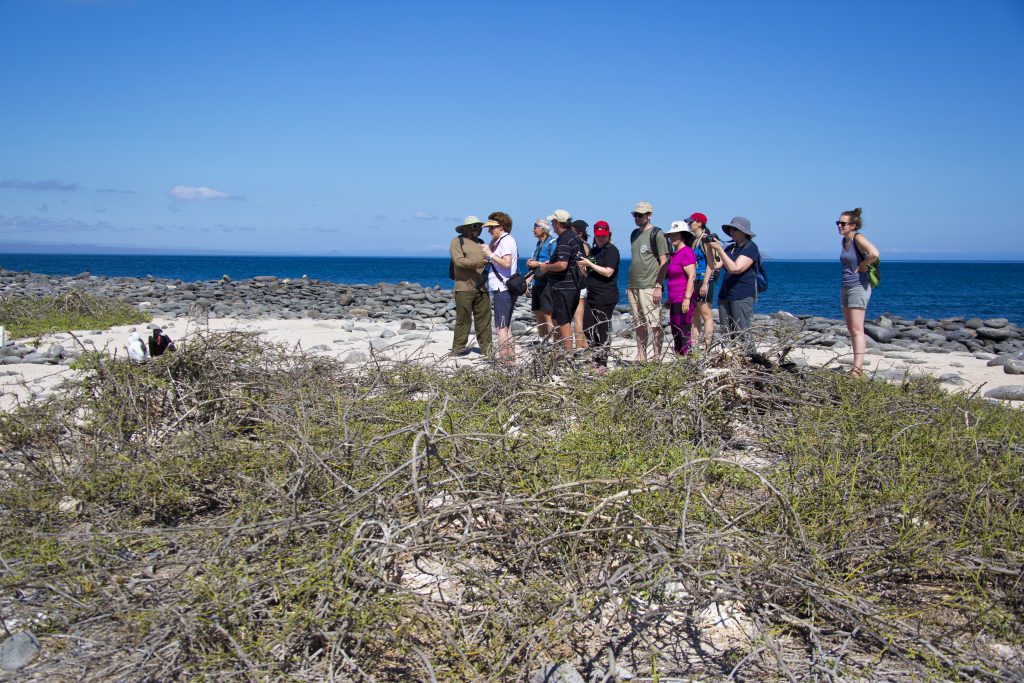
Father and daughter.
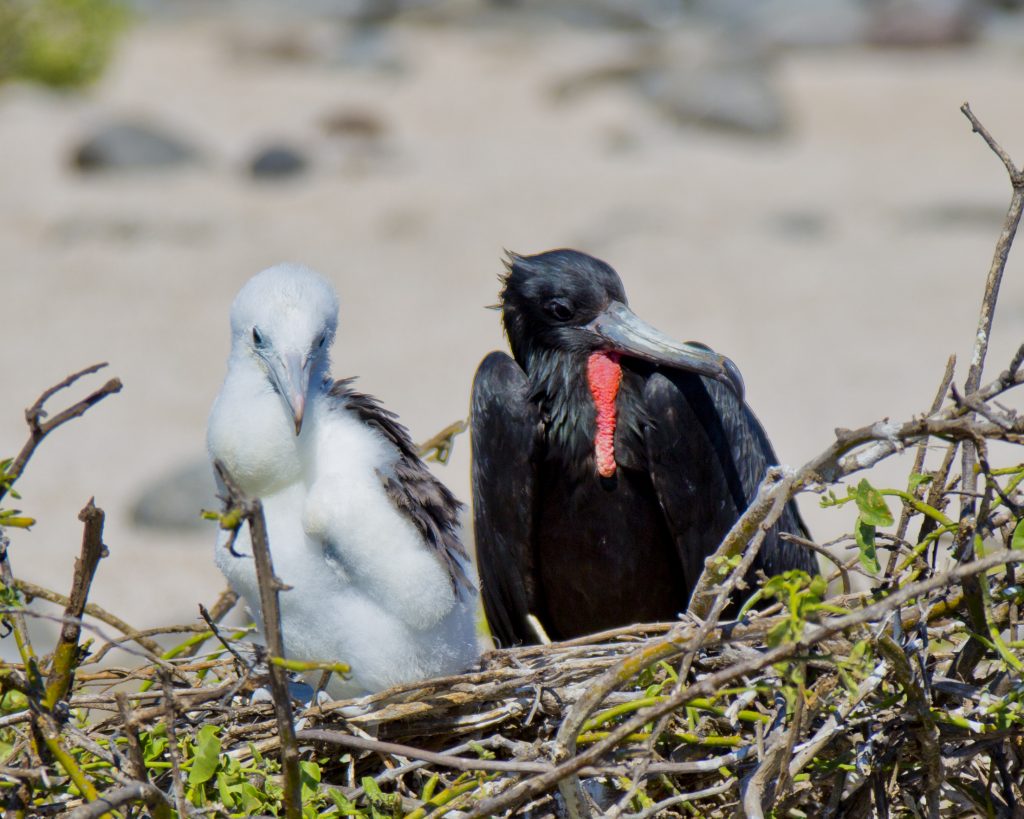
A magnificent mother feeding her teenager a grouper.
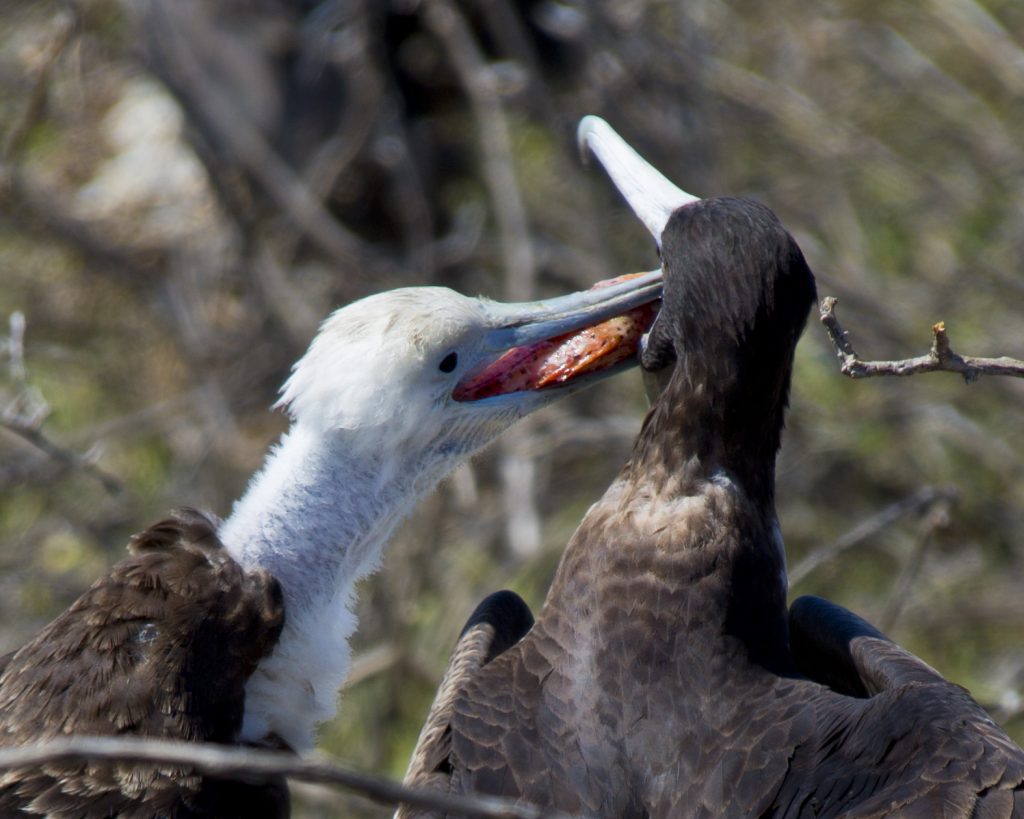
The sibling rivalry goes all the way to fratricide. These two were really going at it. The one on the left wasn’t happy he didn’t get fed.
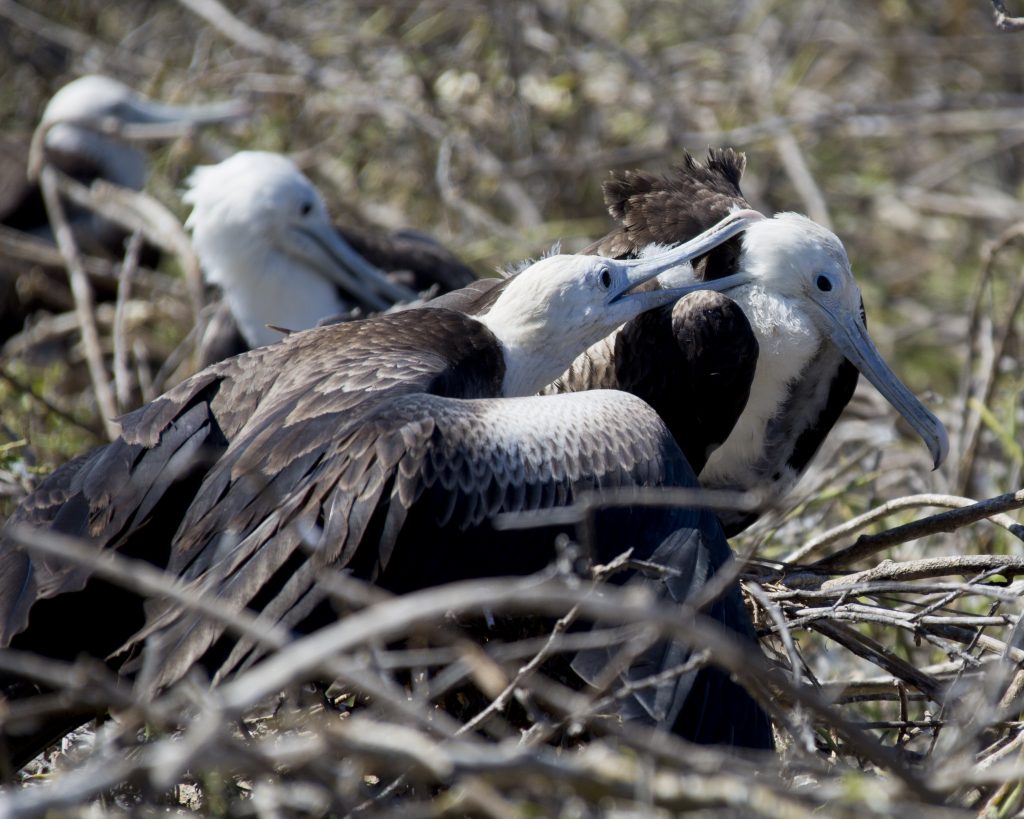
He takes “getting your swell on” to a whole new level.
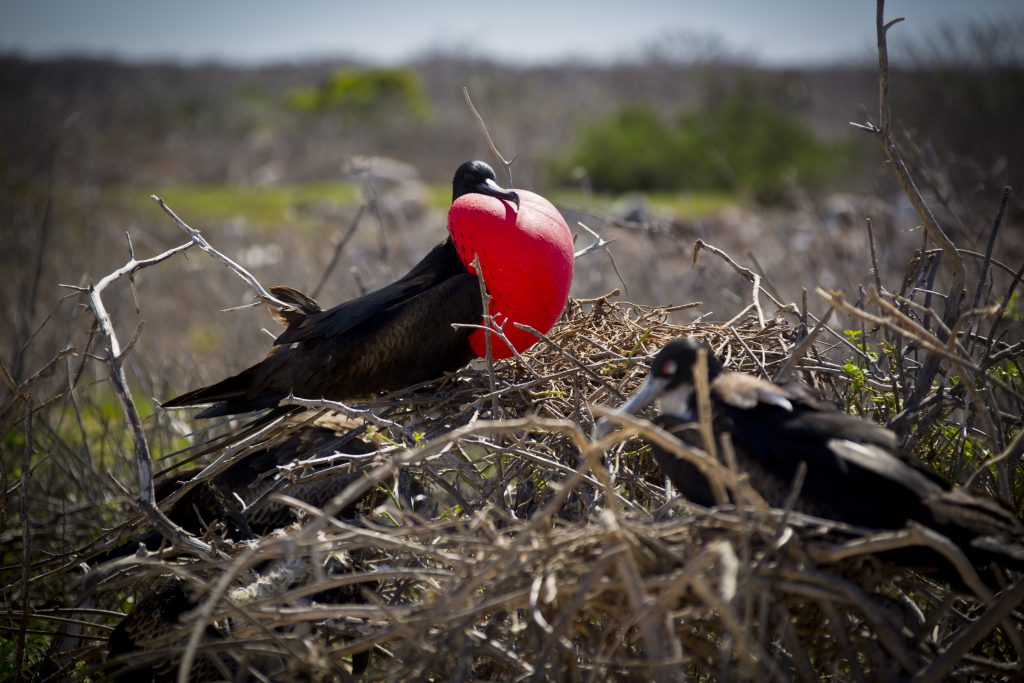
Yeah…
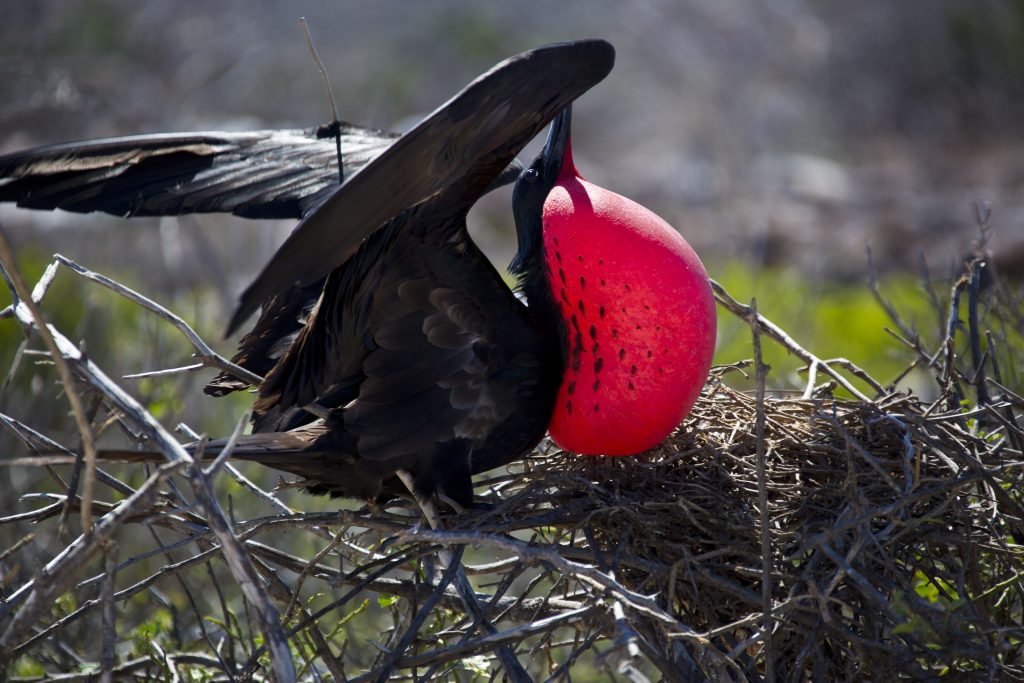
Good thing these birds are so light (for their size). They only weigh 1-1.6 kg (2.2-3.5 lbs). Also, the take part in the peculiar form of kleptoparasitism. That is, the frigatebird will chase other birds to steal their food, or even force the other bird to regurgitate the food, then eat it. While this is relatively common in nature, it’s rare among birds. It’s also thought that frigate birds get up to 40% of their food in this manner.
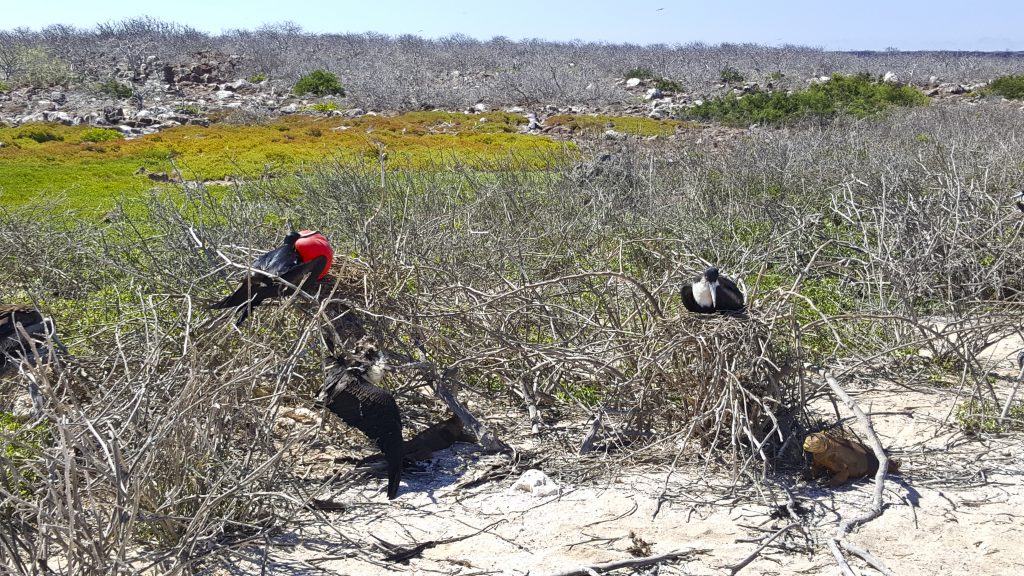
The iguana was not impressed.
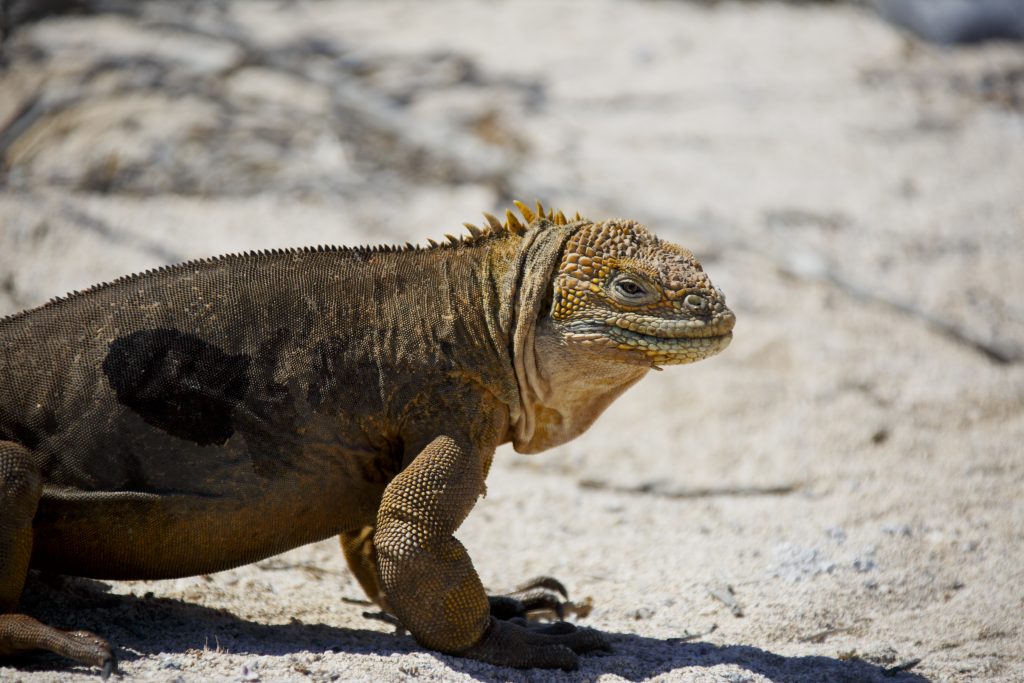
All three.
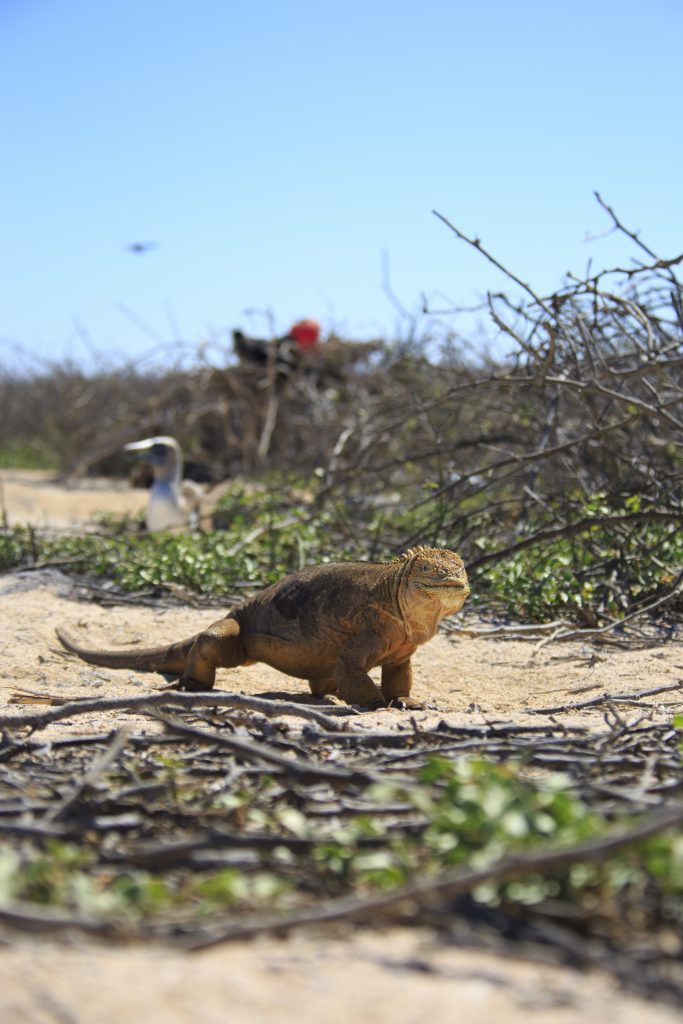
He was just looking for lunch.
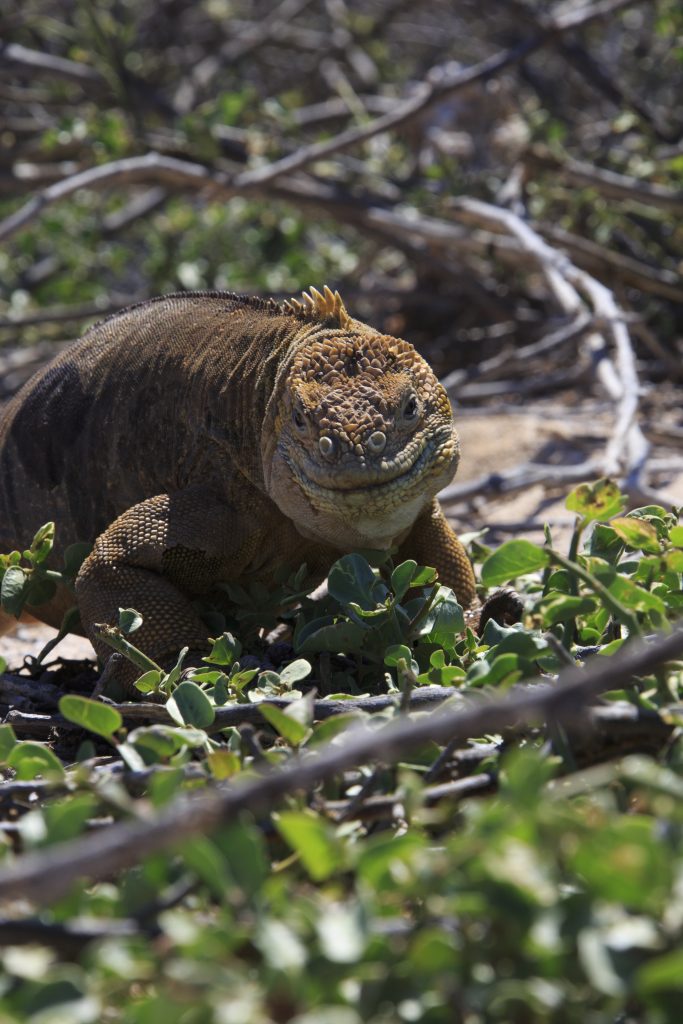
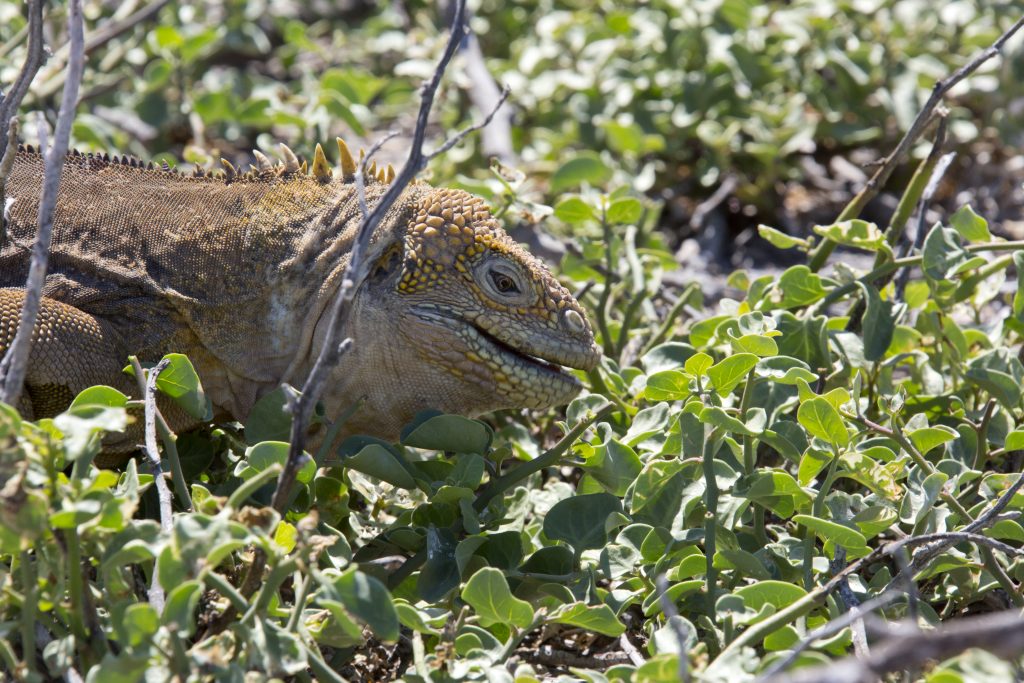
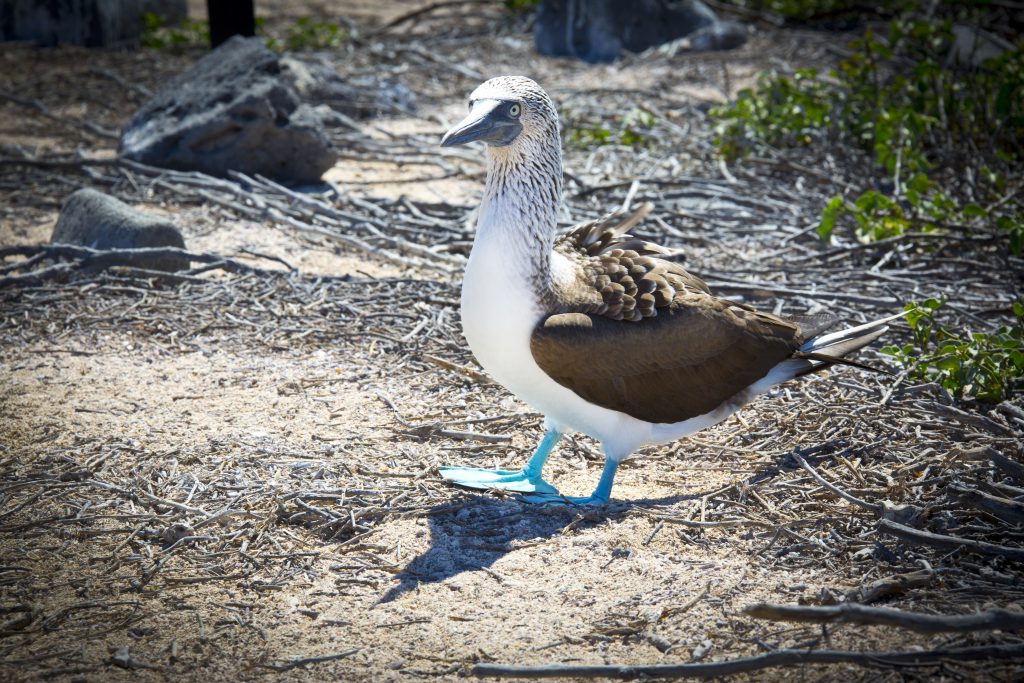

A Galapagos dove, endemic to the islands.

A blue footed booby in flight is much more graceful than on the ground.
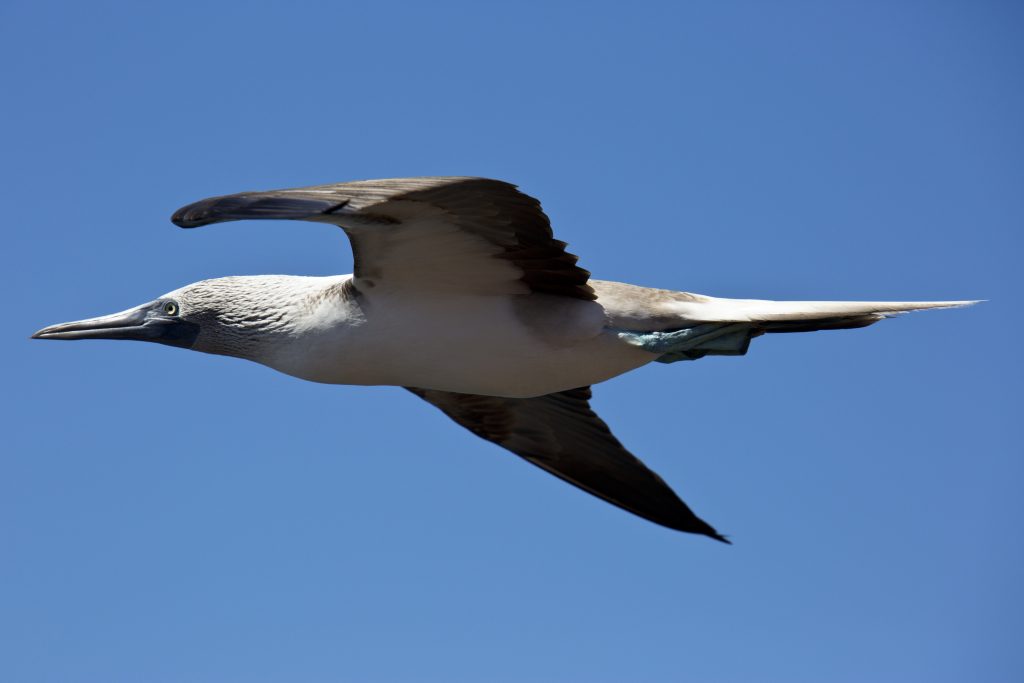
Our rides coming to bring us back to the boat.
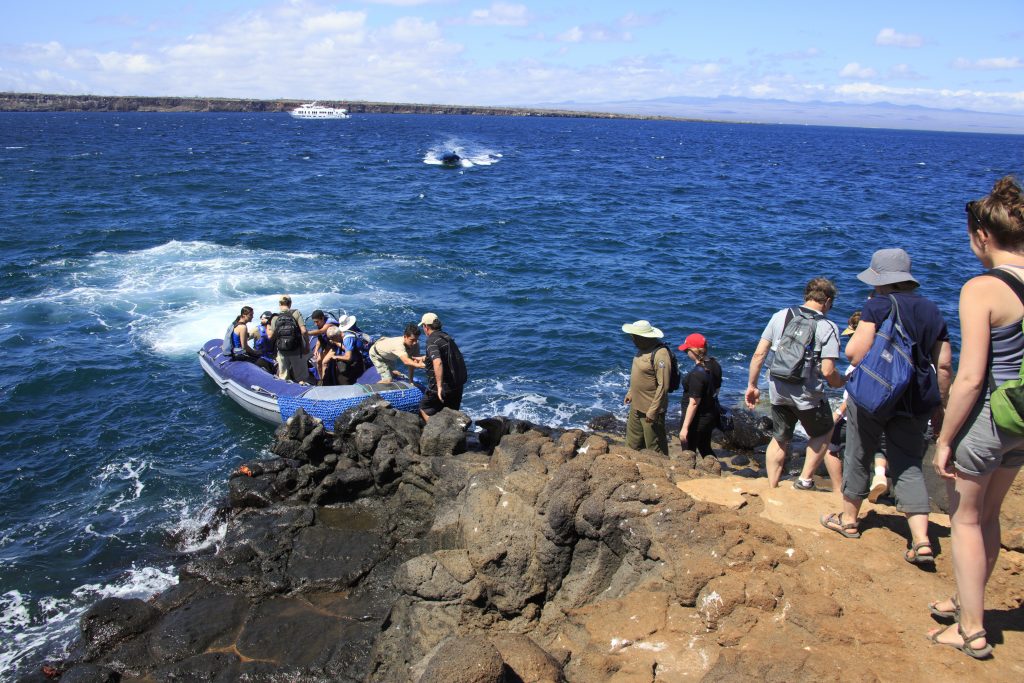

BACHAS BEACH, SANTA CRUZ ISLAND
Our next stop was fairly close, back to Santa Cruz Island for an afternoon snorkel and hike on Bachas Beach.
There was a group of three golden rays that were swimming in the bay. I kept bumping into them. The visibility wasn’t great (as you can see), so I hung back and swam behind them for a while. I very much enjoy watching large rays swim.
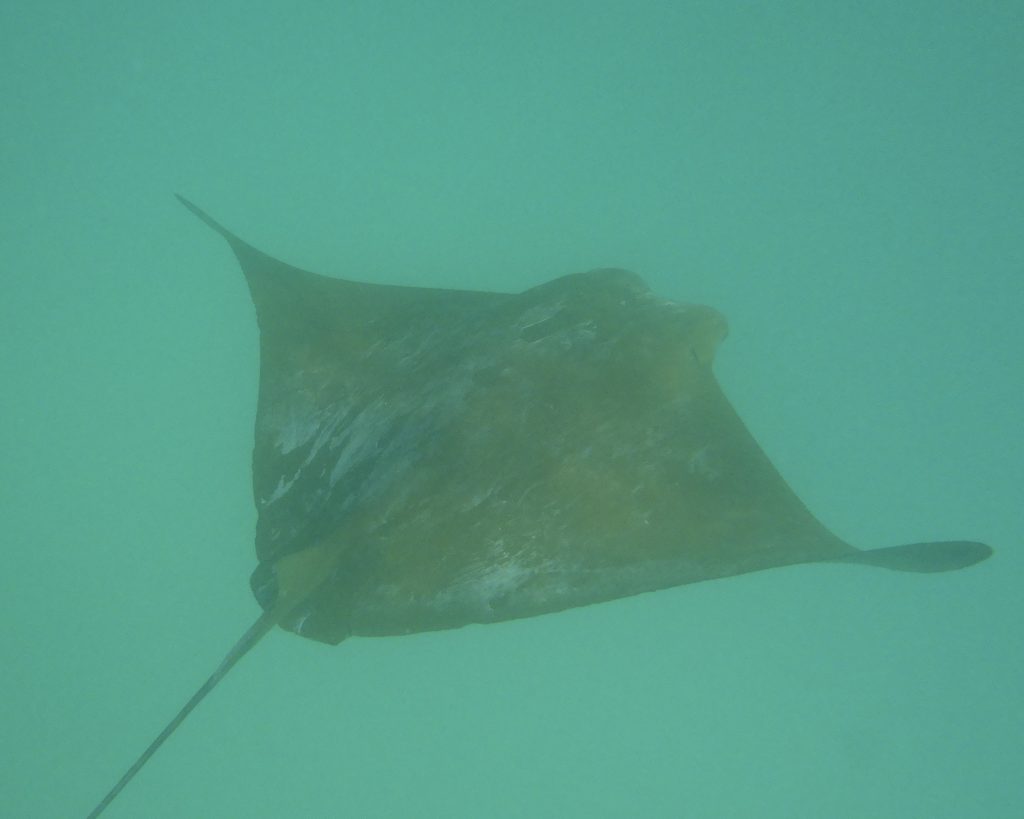

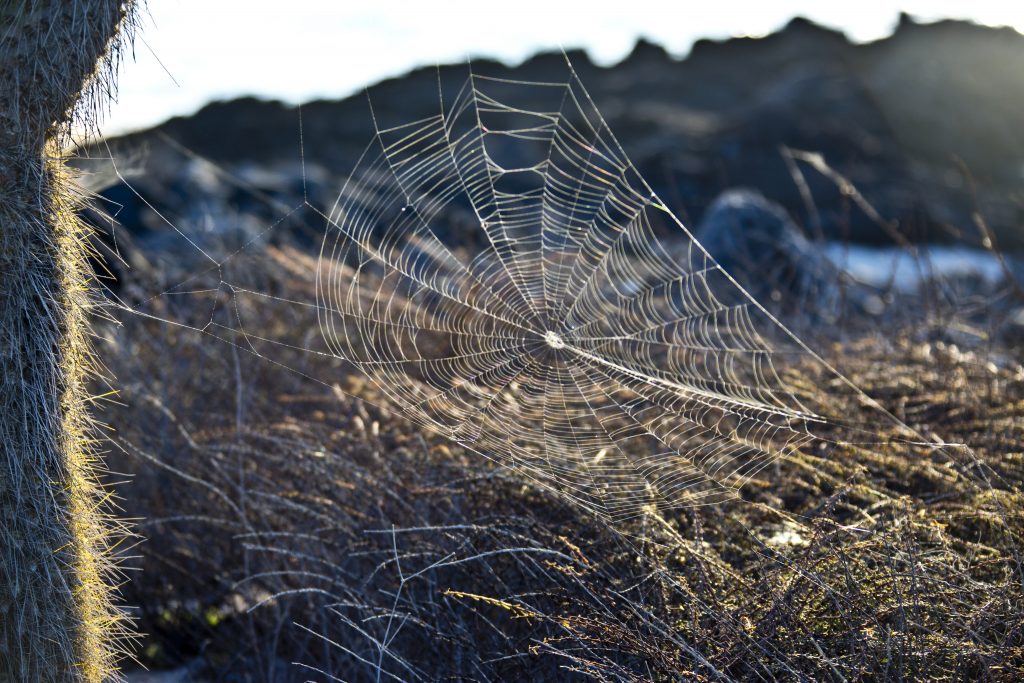
The name Bachas Beach dates back to the second World War. At the time, the US had lots of personnel and equipment in the area. In this particular area there were floating barges. At some point, a couple of the barges broke away and washed up on shore. The word barges was likely mispronounced by the local population of Santa Cruz and morphed into Bachas. Some of the metal from the original barges is still in the sand today.

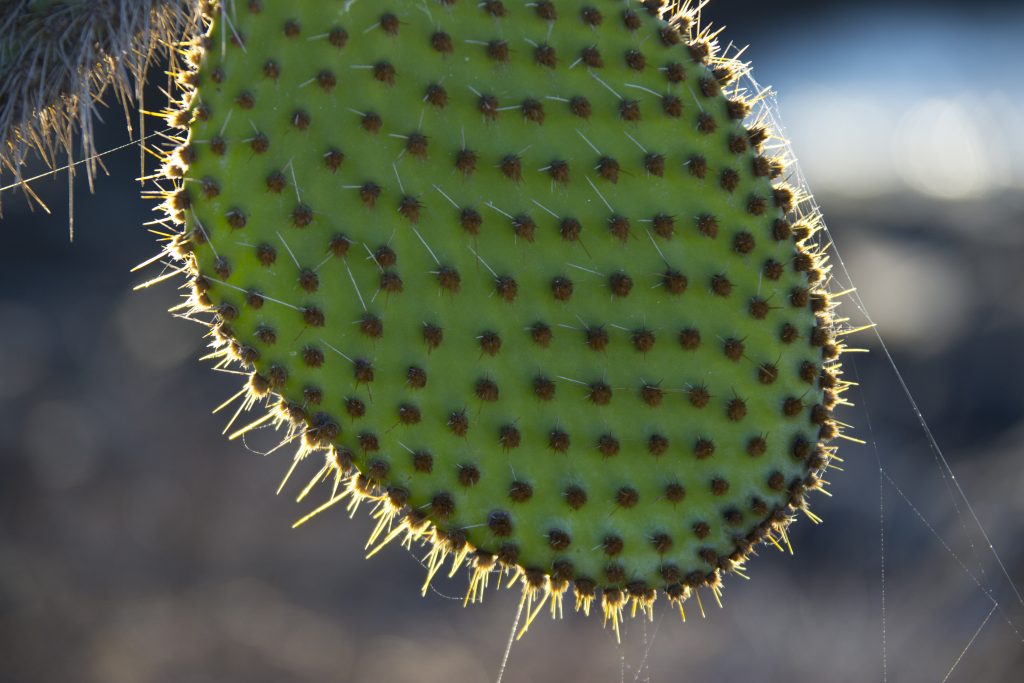
The pelicans were all going after their dinner with gusto and speed.
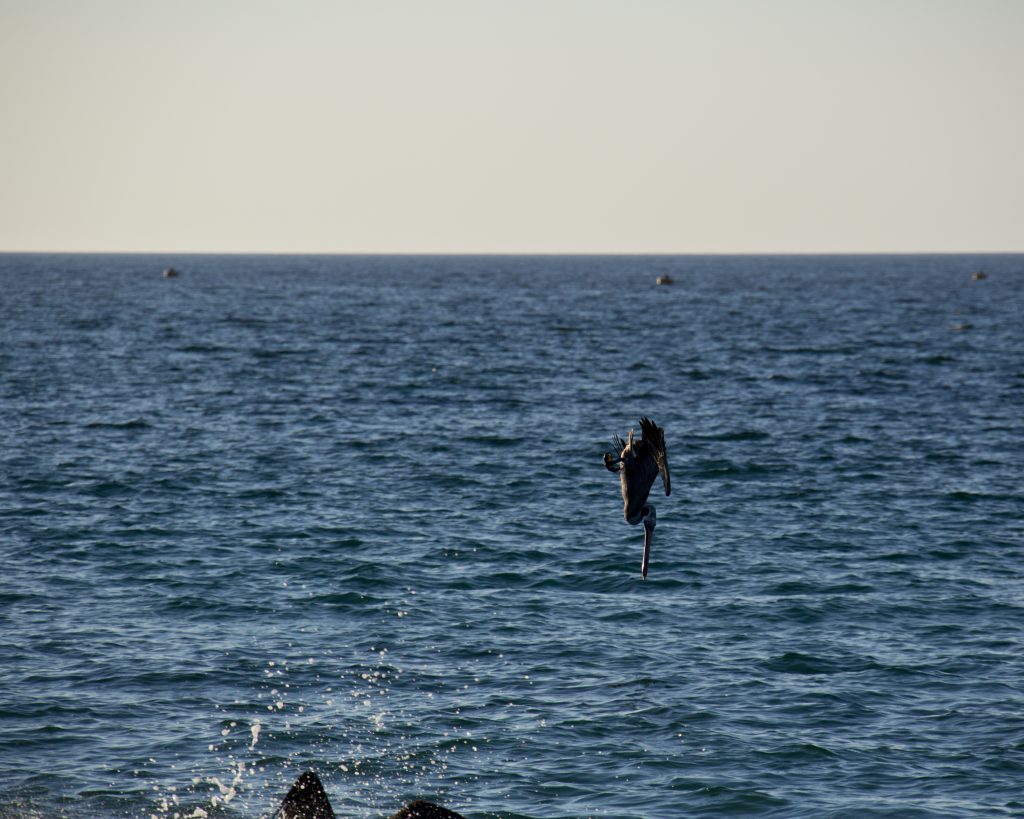
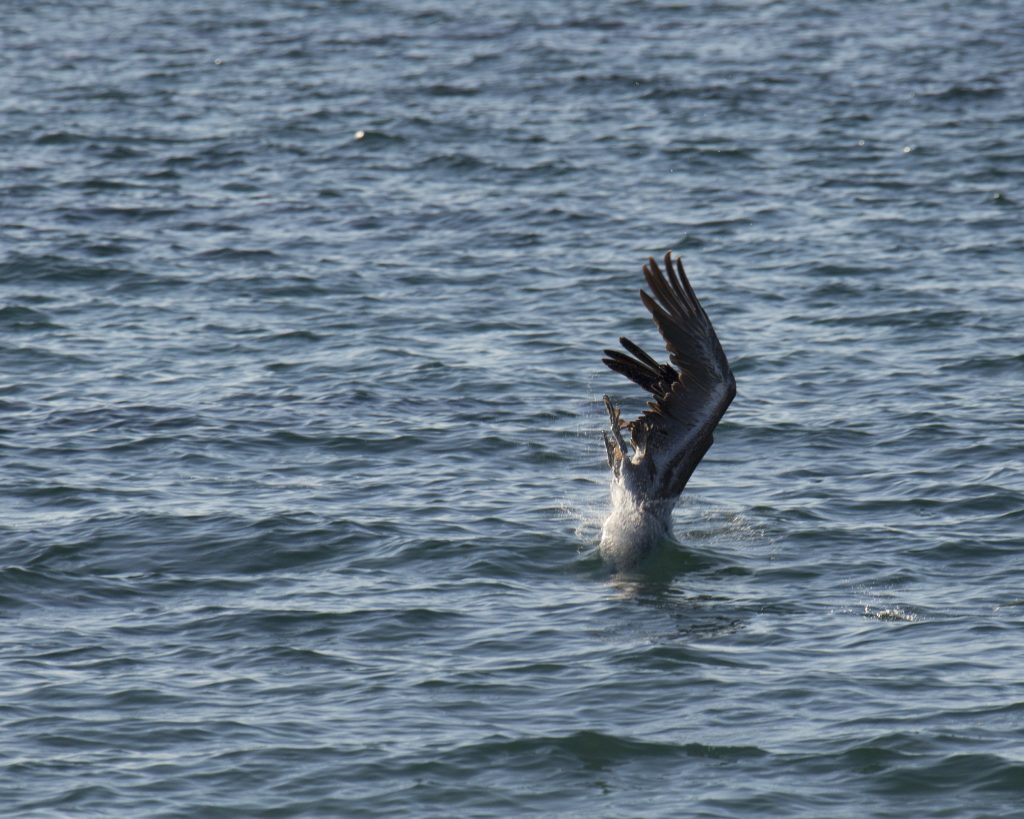
A juvenile black tip reef shark.
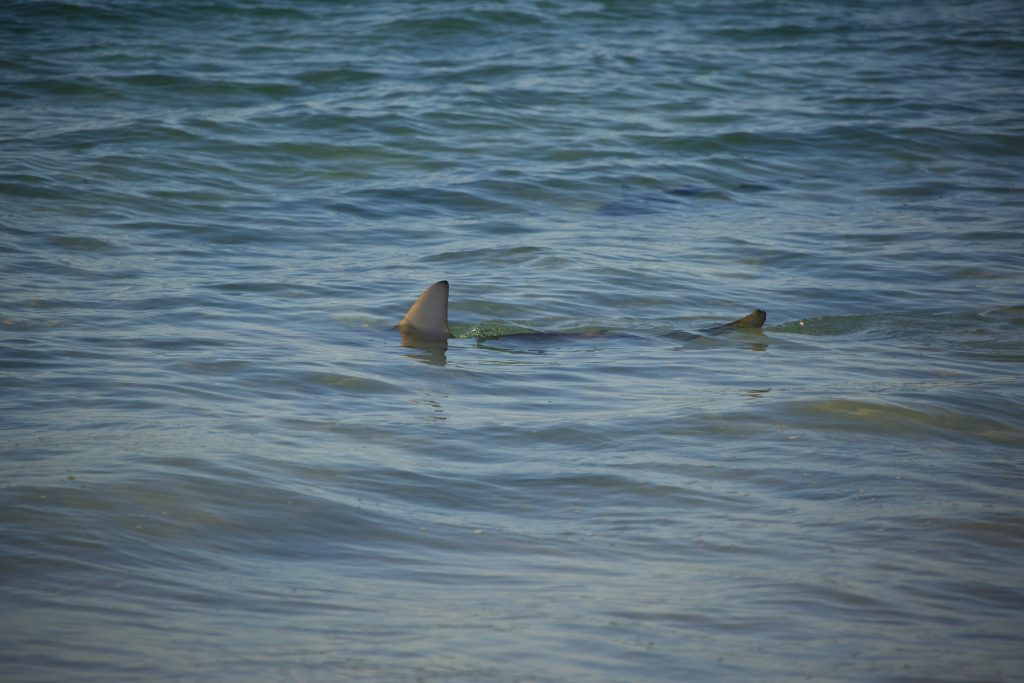
Immature Galapagos brown pelican.
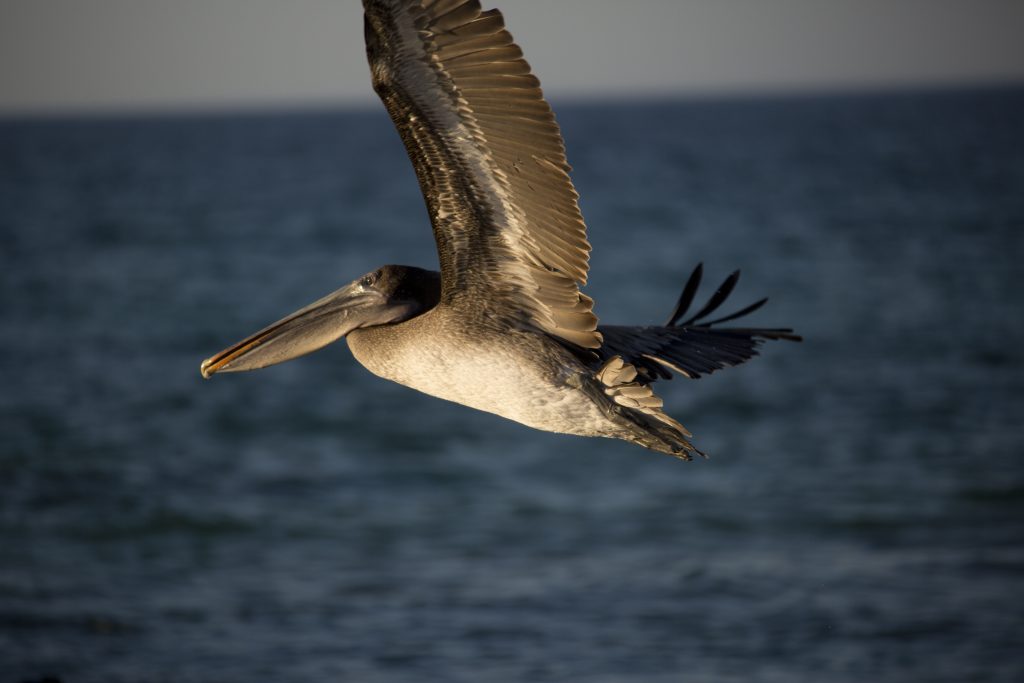
On the other side of the beach was a lagoon with three Greater flamingos.
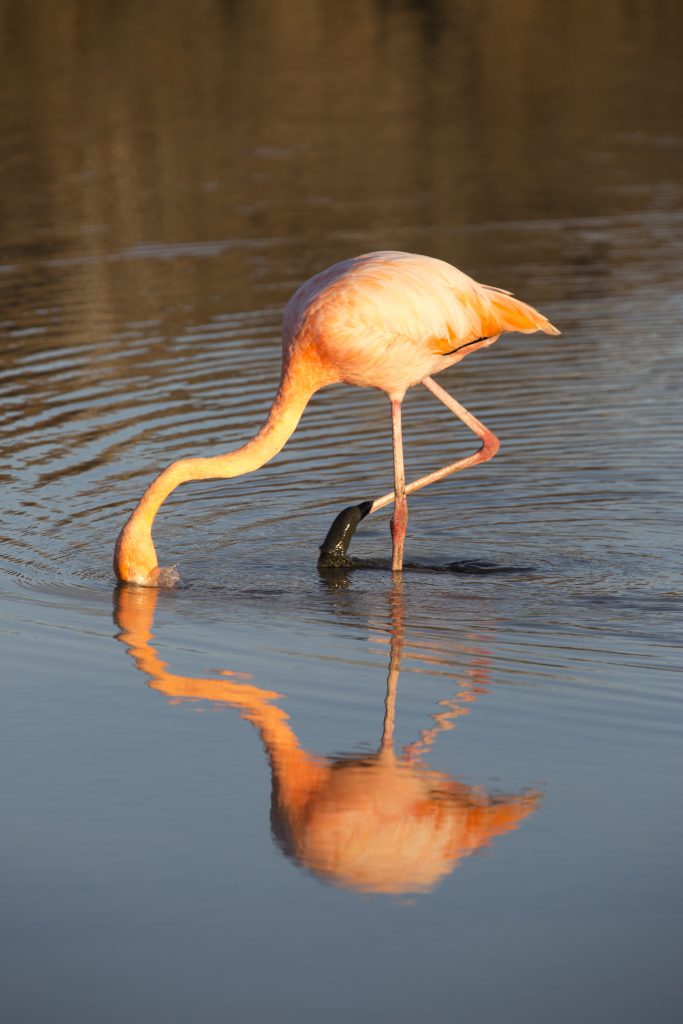
A marine iguana thinking about swimming out to join the flamingo.
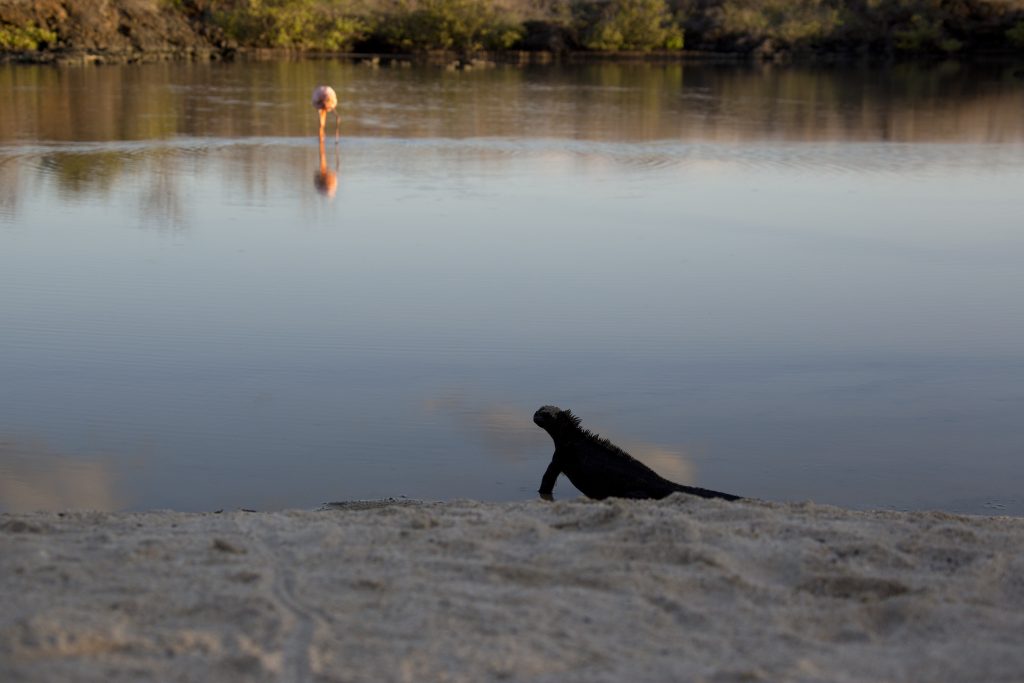
A black-necked stilt.

Yep, he decided to go check it out with the flamingo.
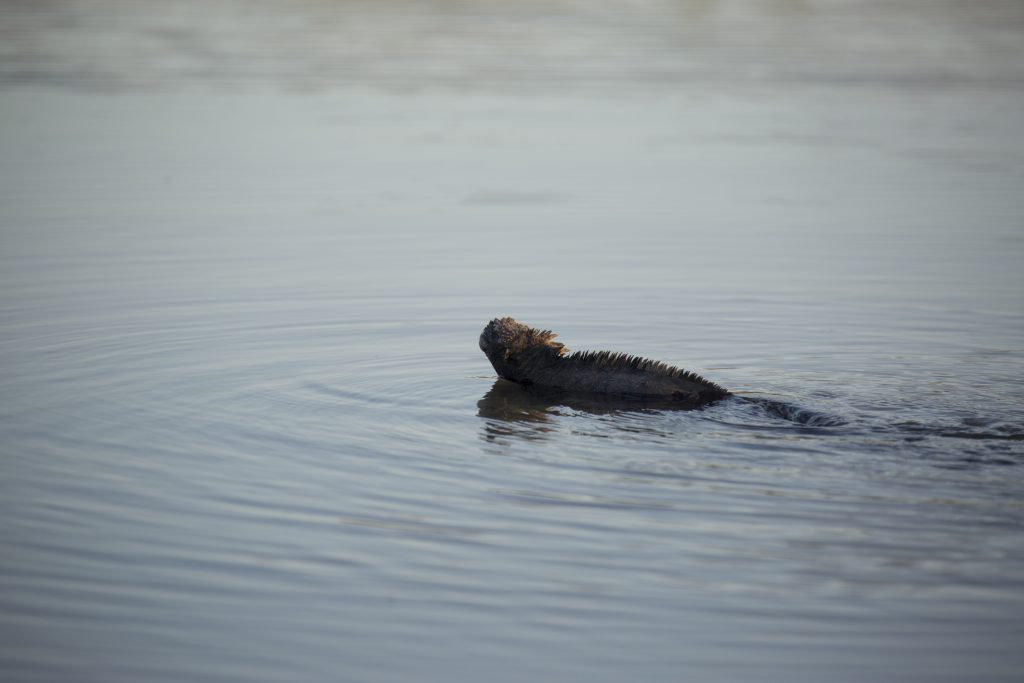
So, out he went.
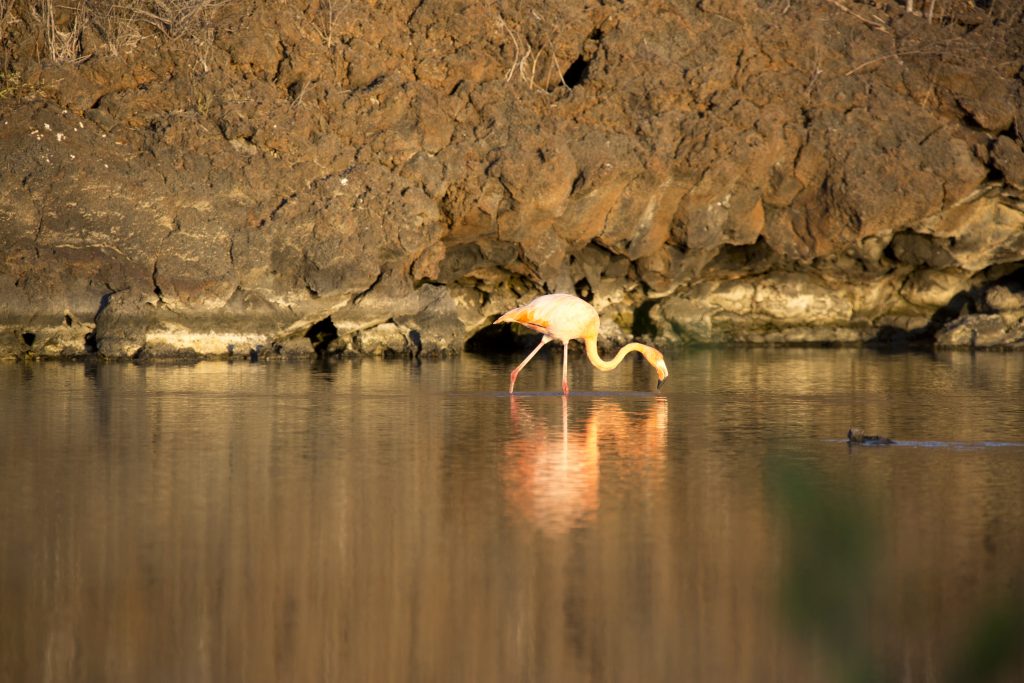
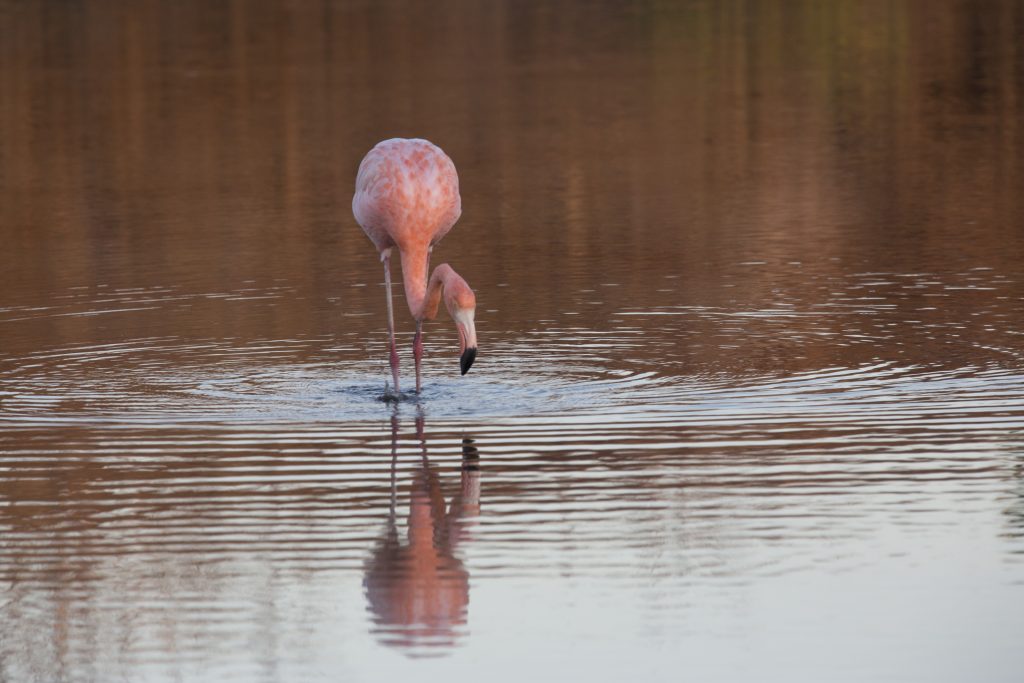
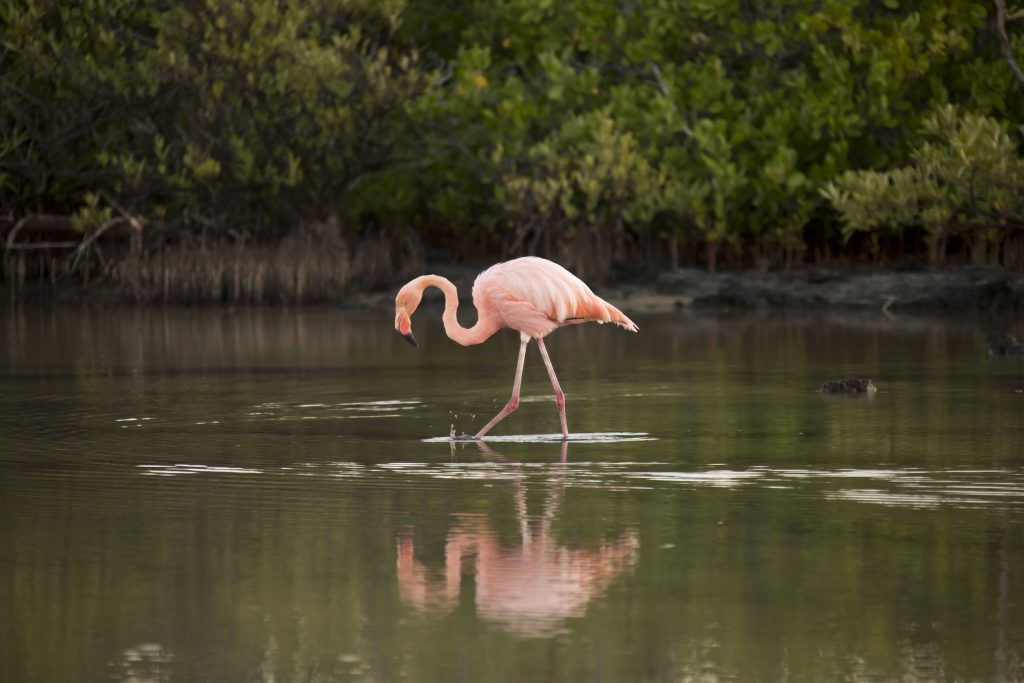

A blue crab.
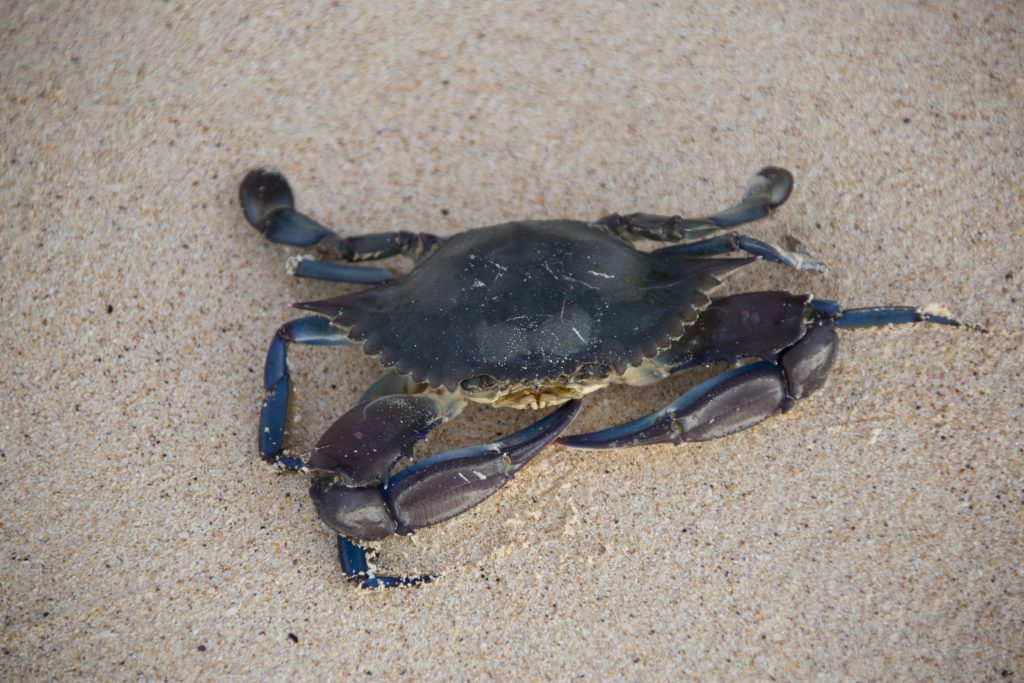
Another beautiful sunset in the Galapagos.
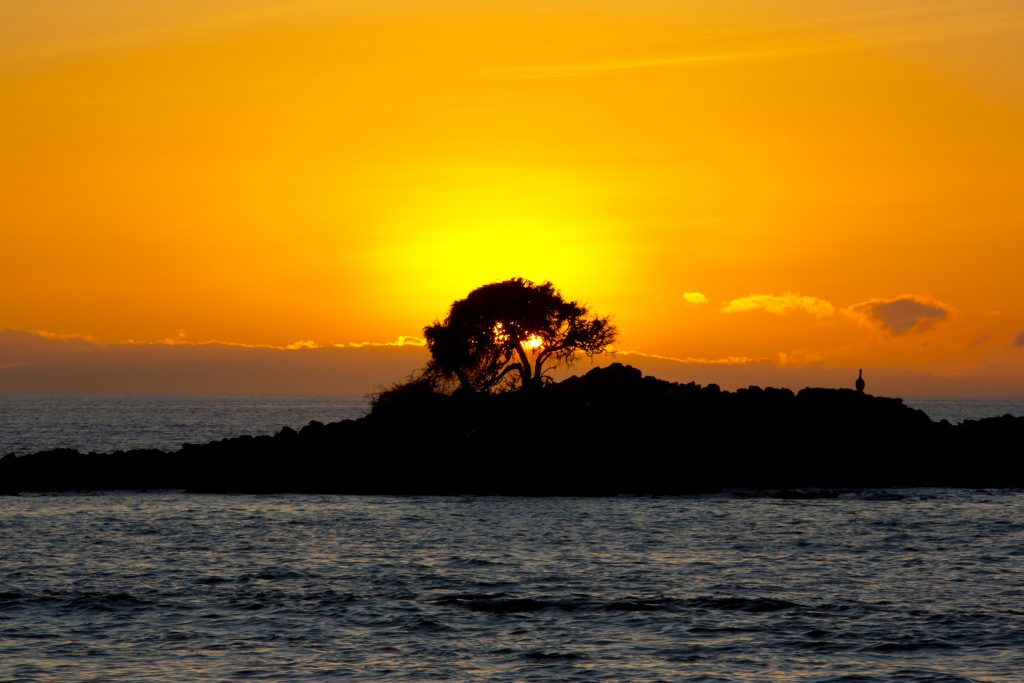
Two more days and our adventure had to come to a close.
Until the next day…
–Jim
